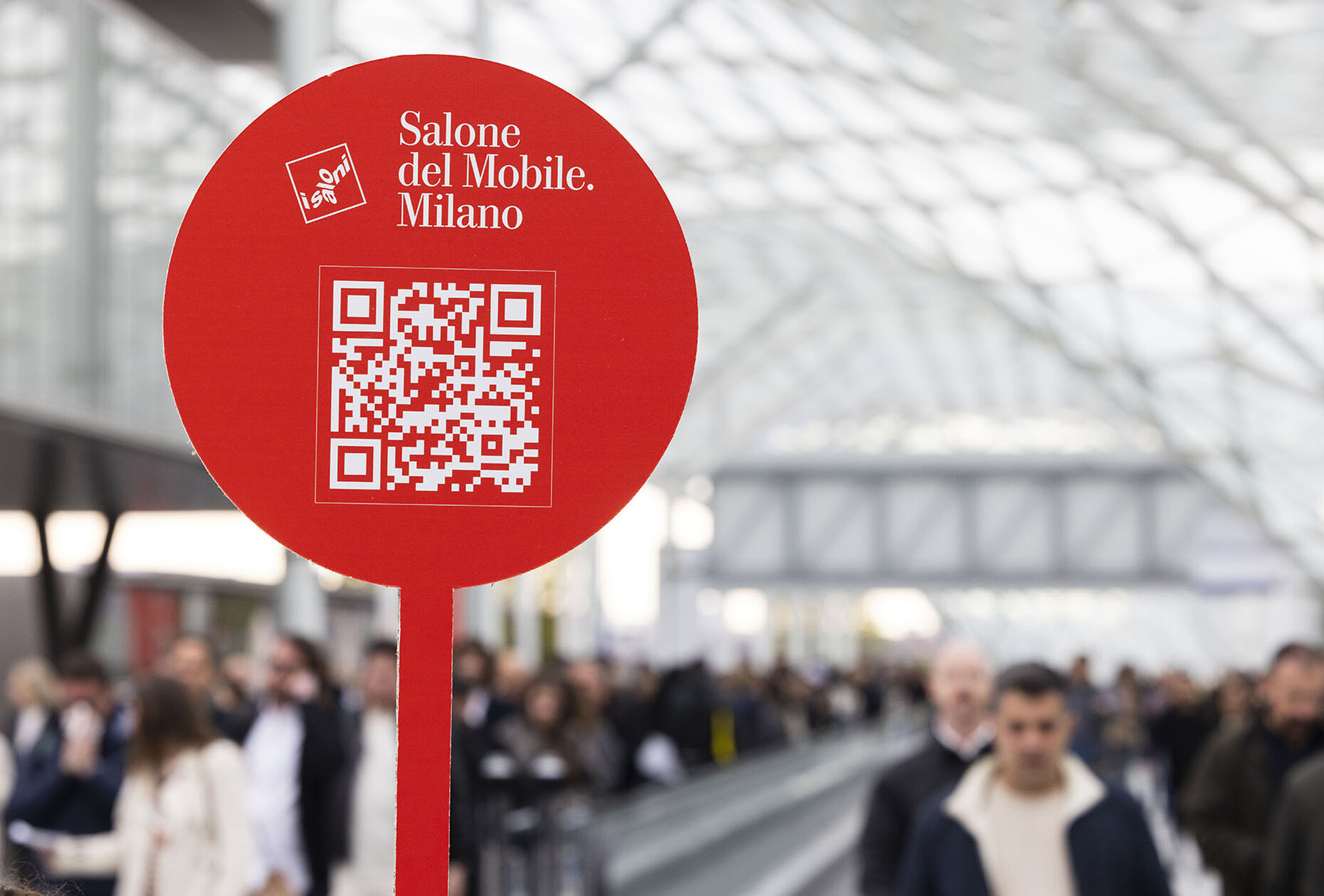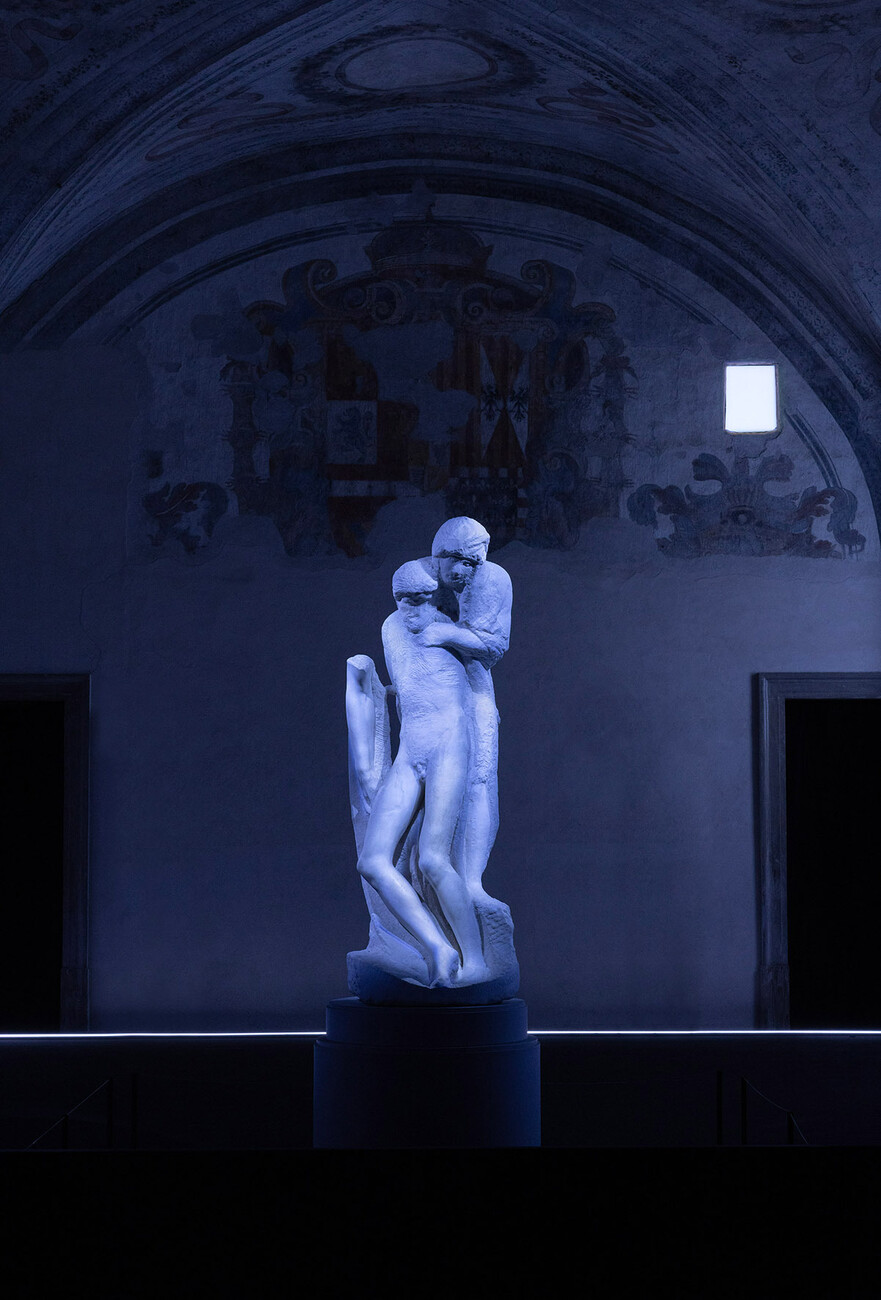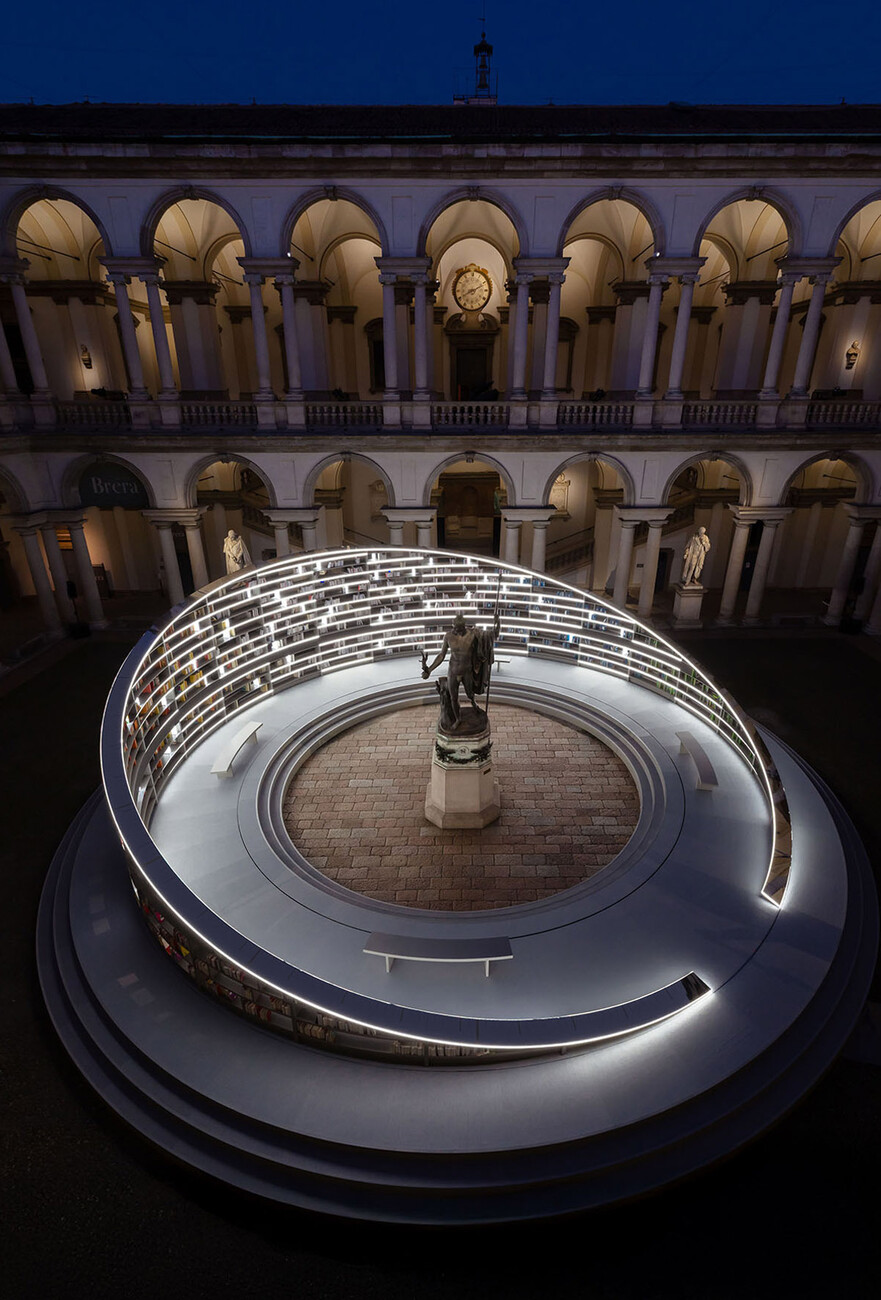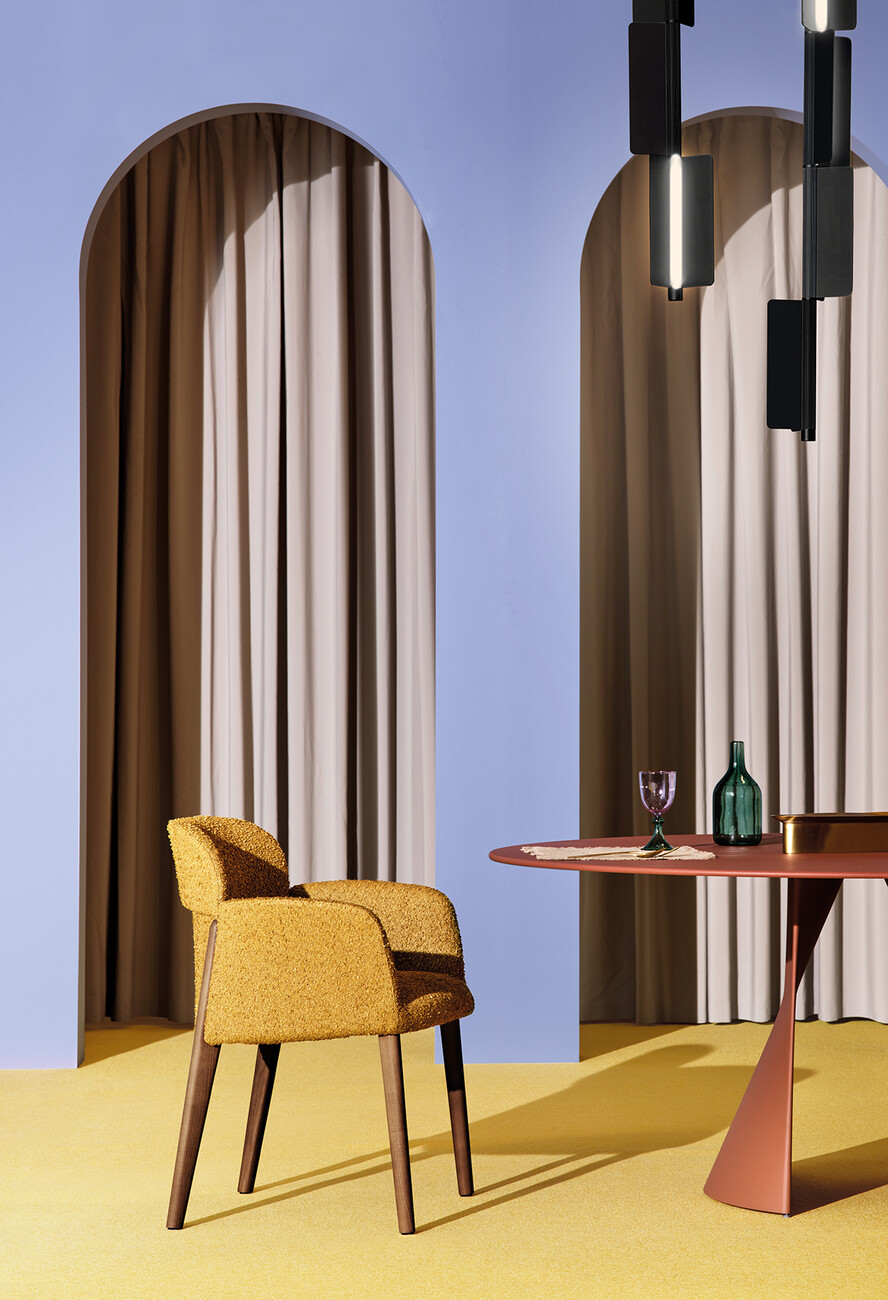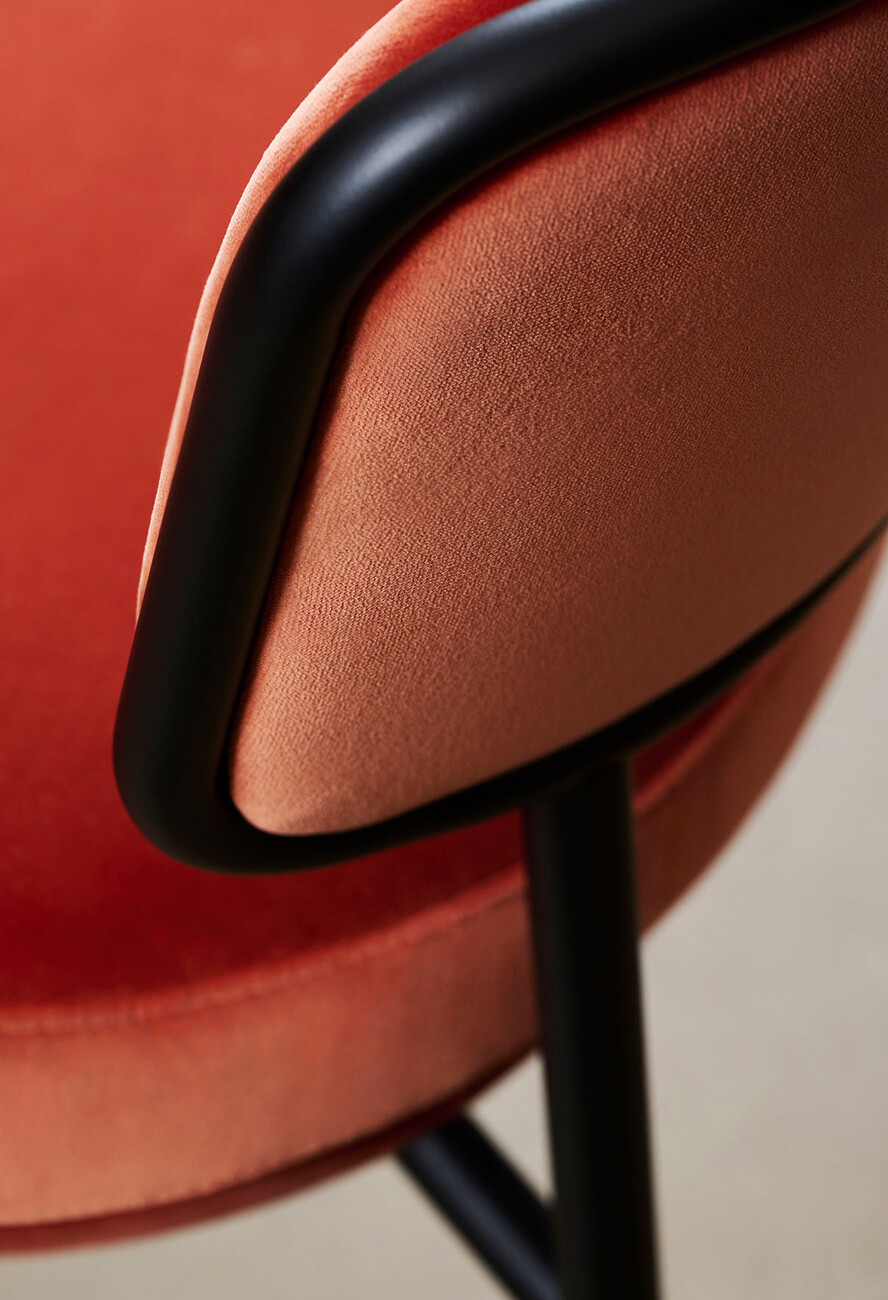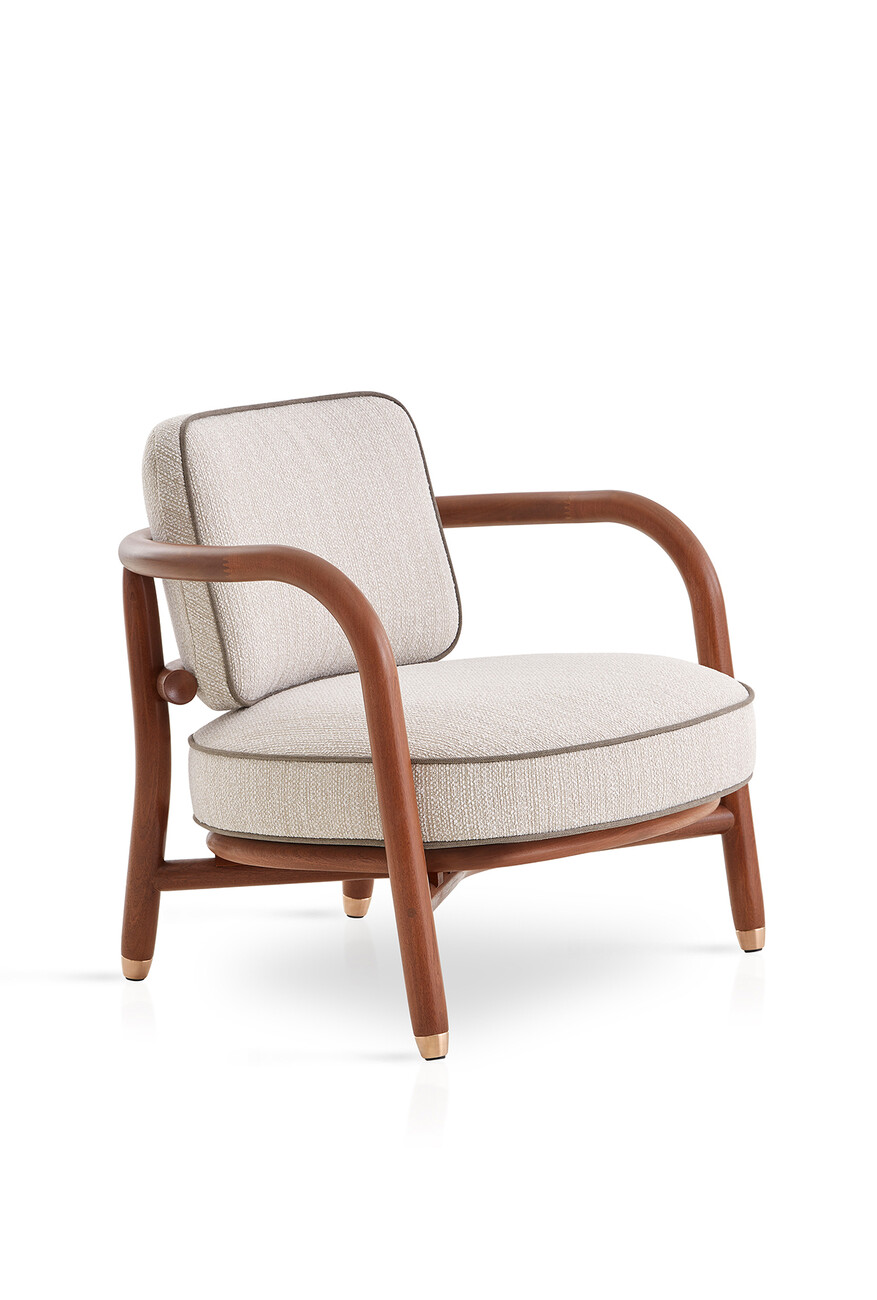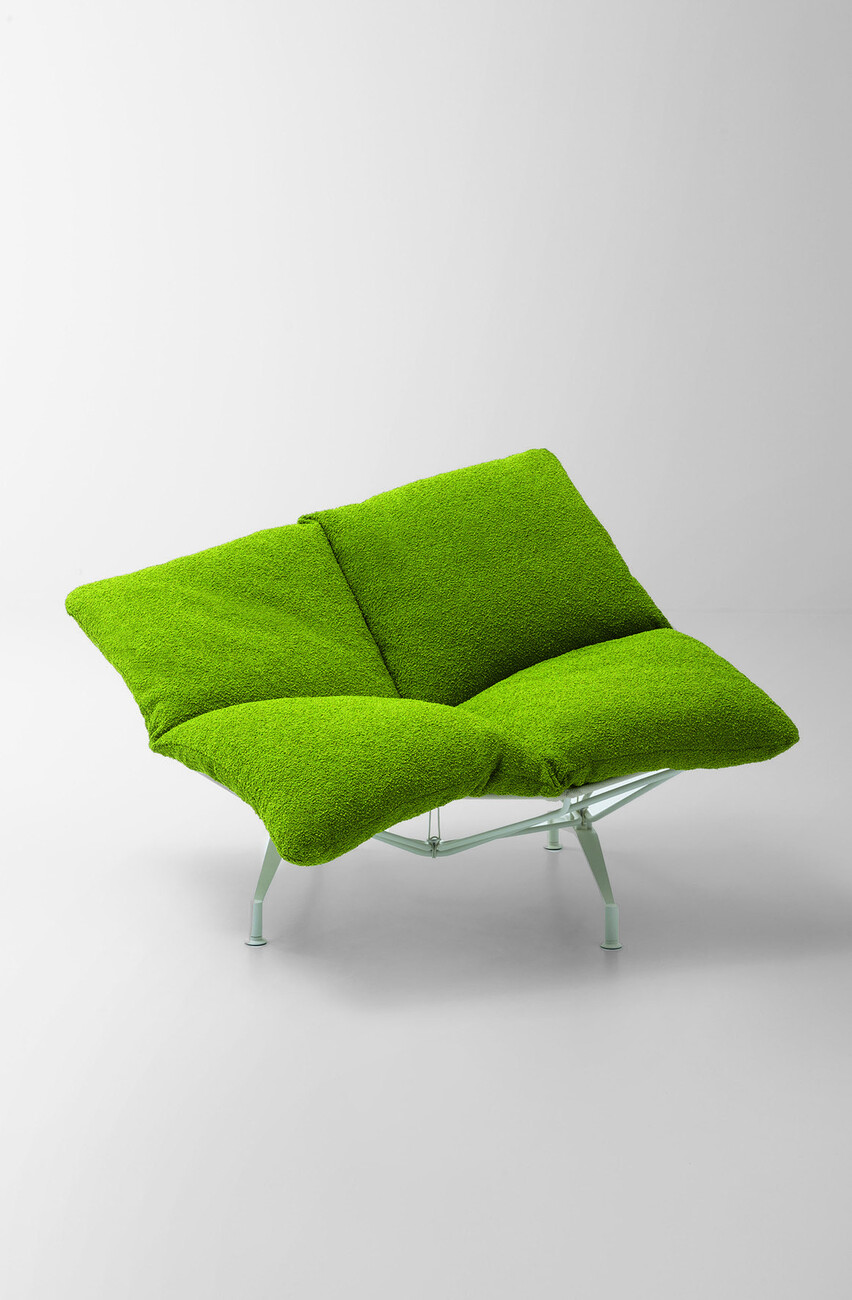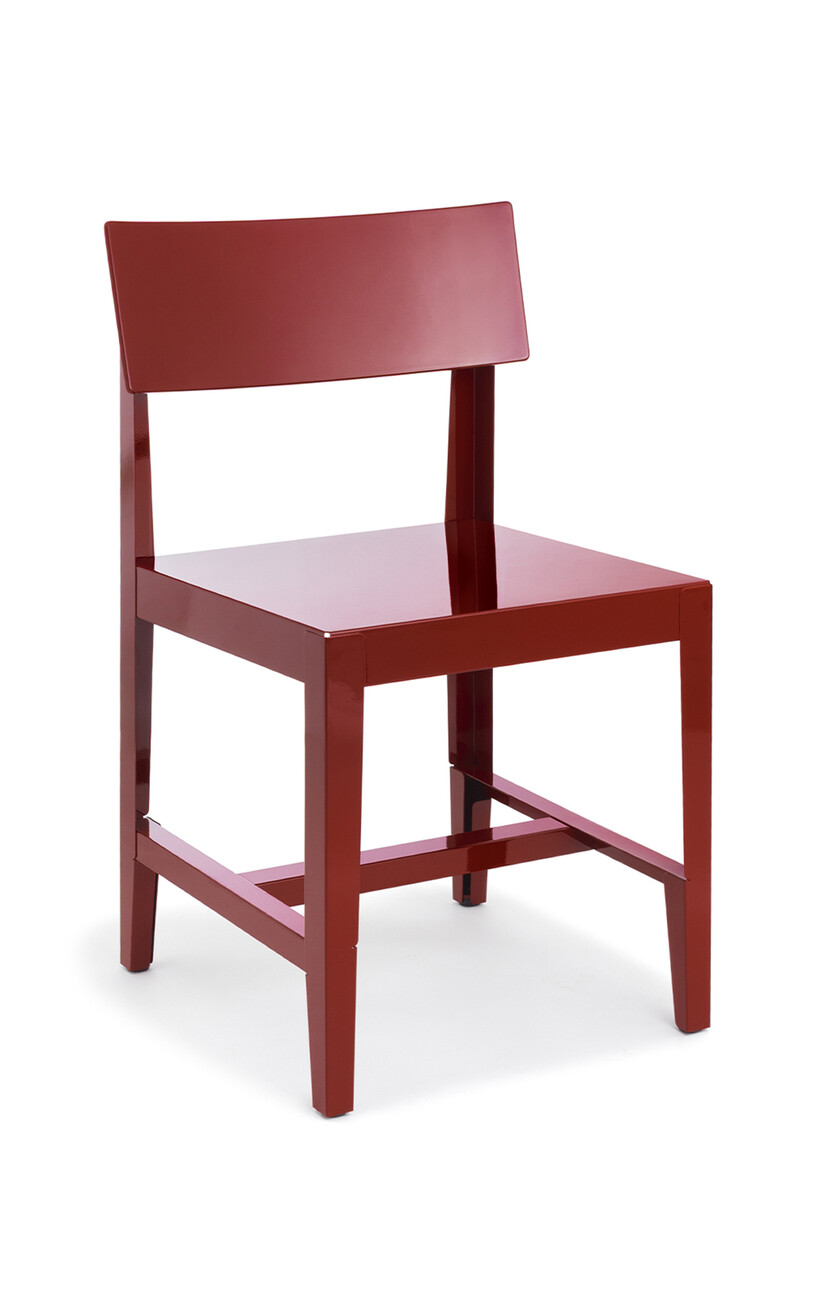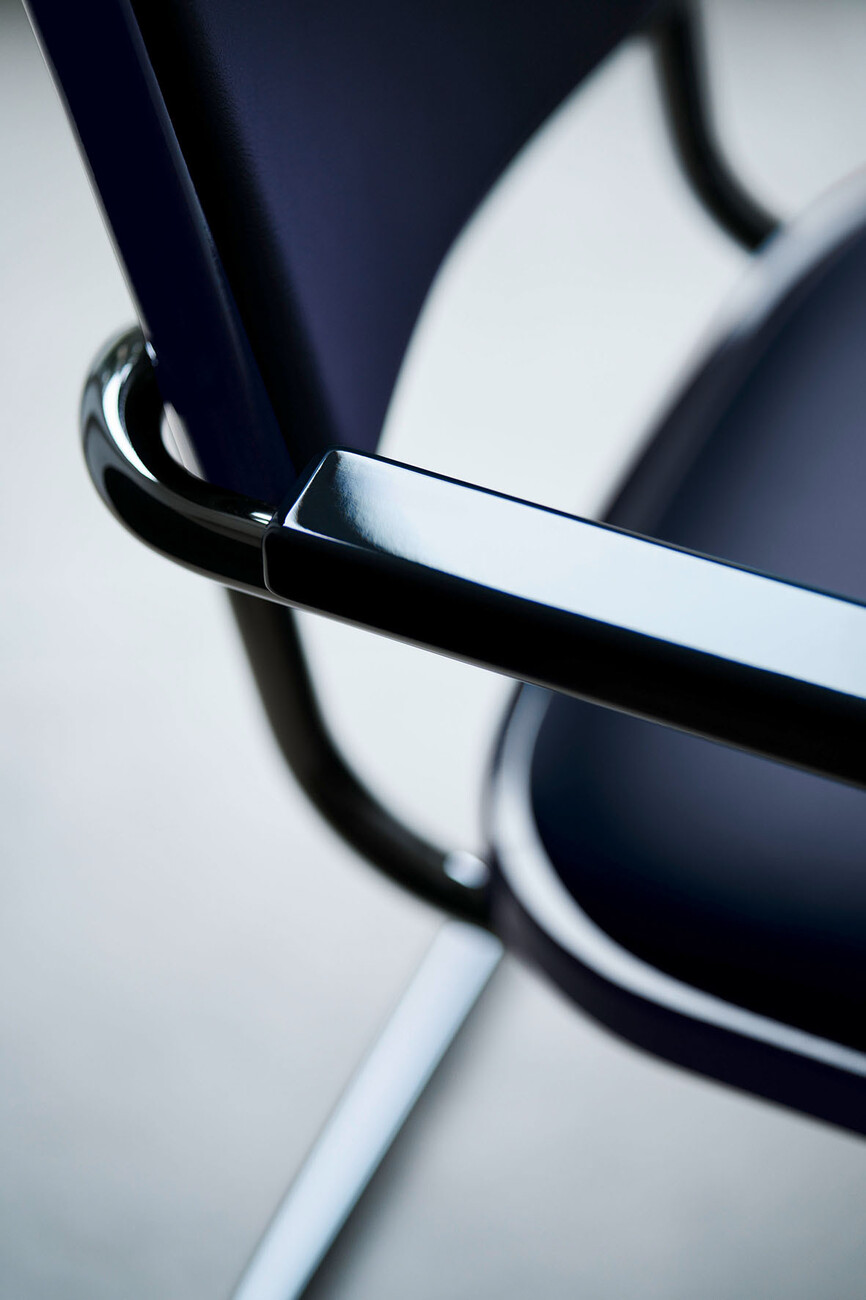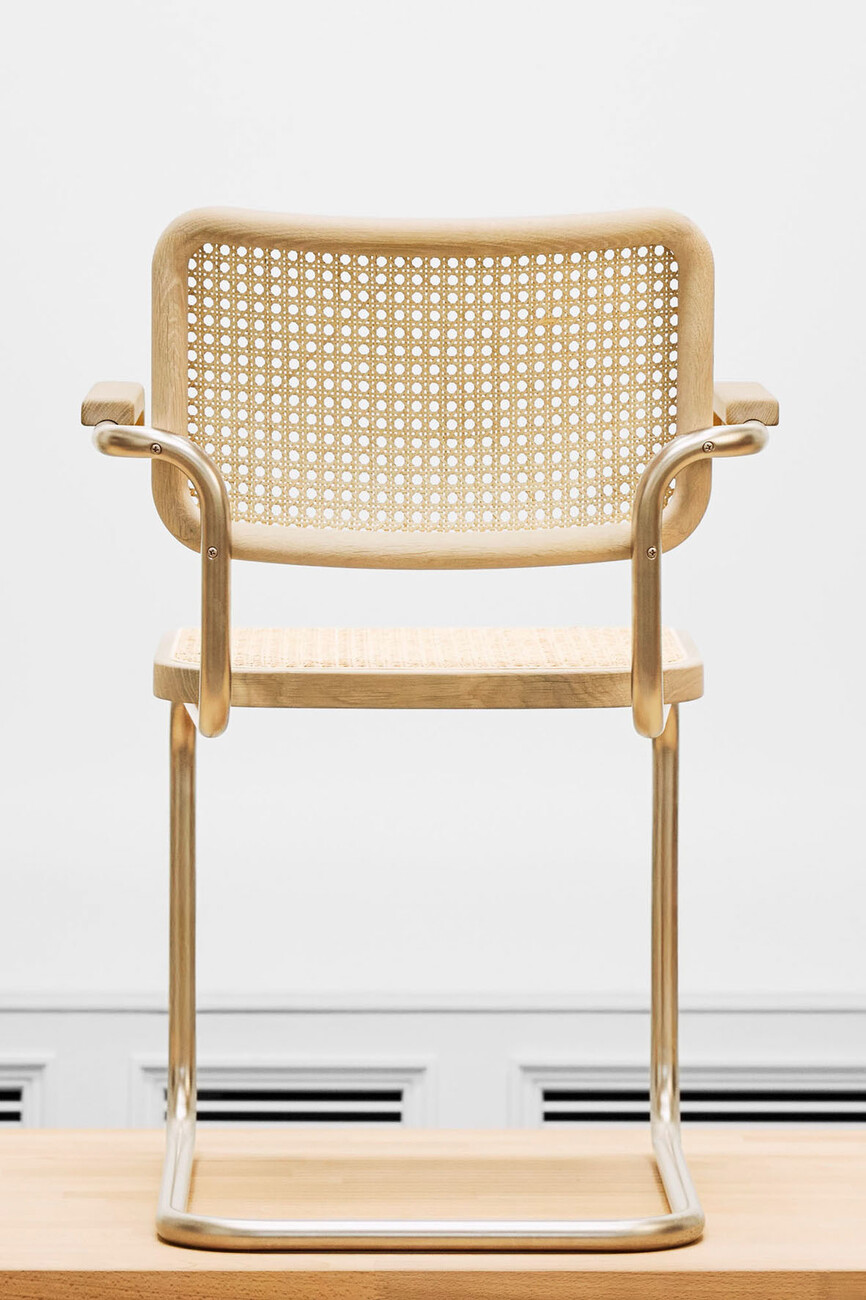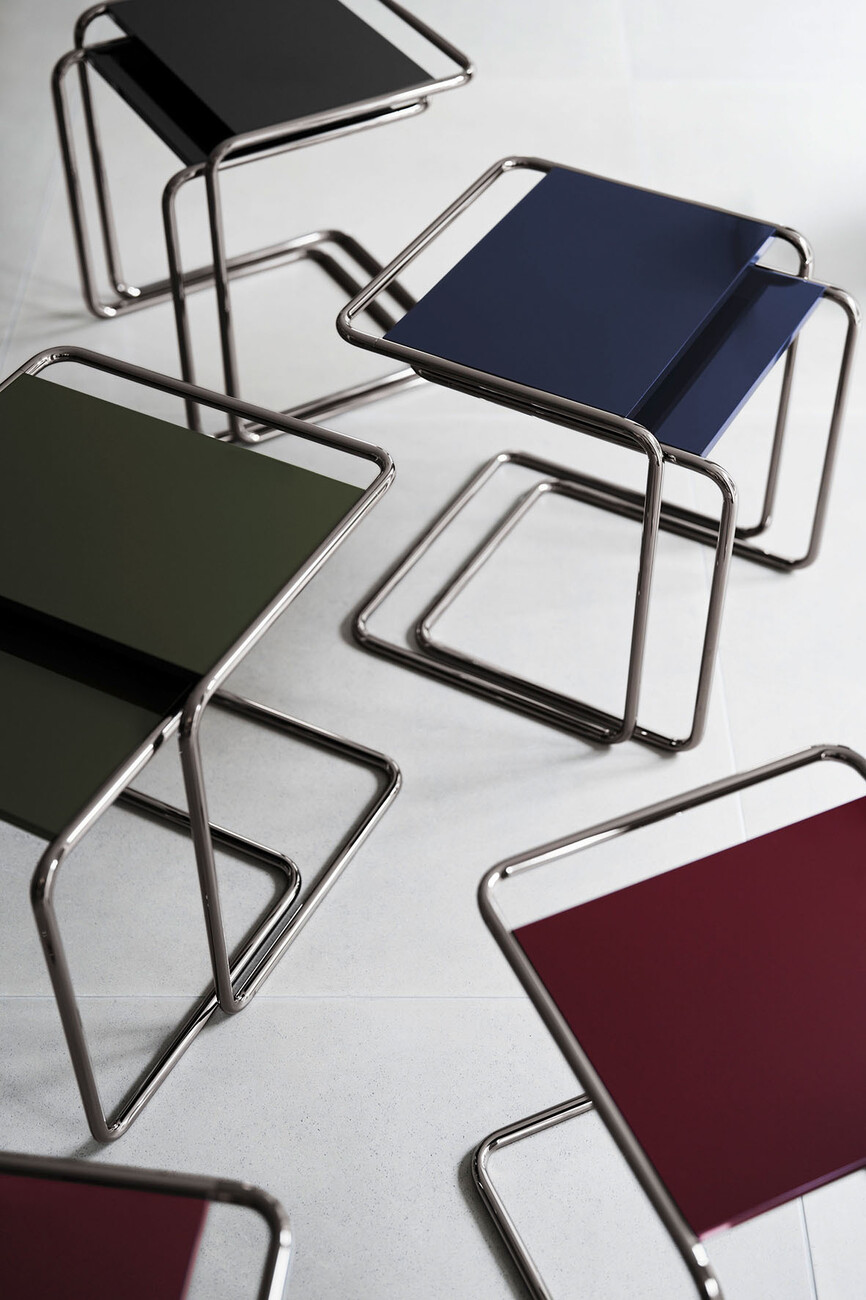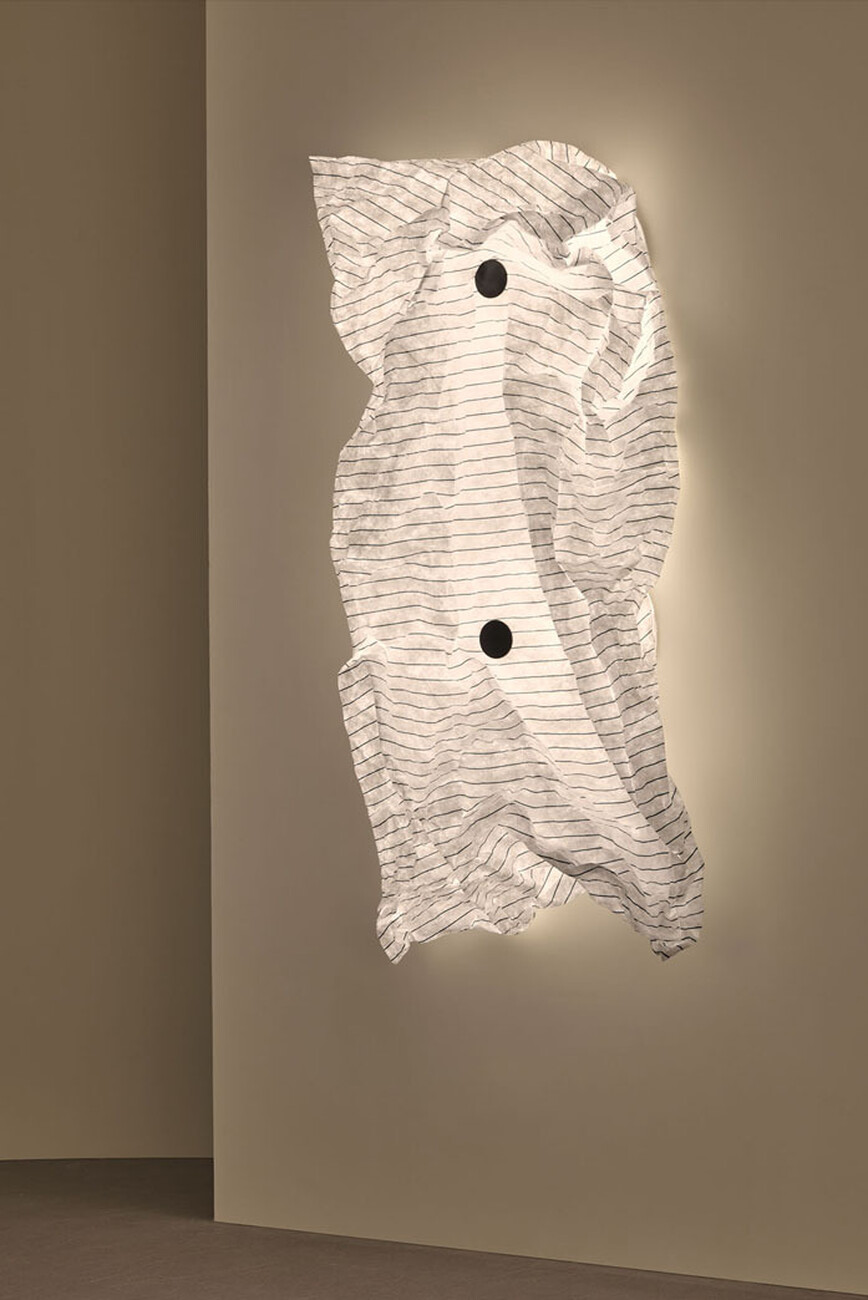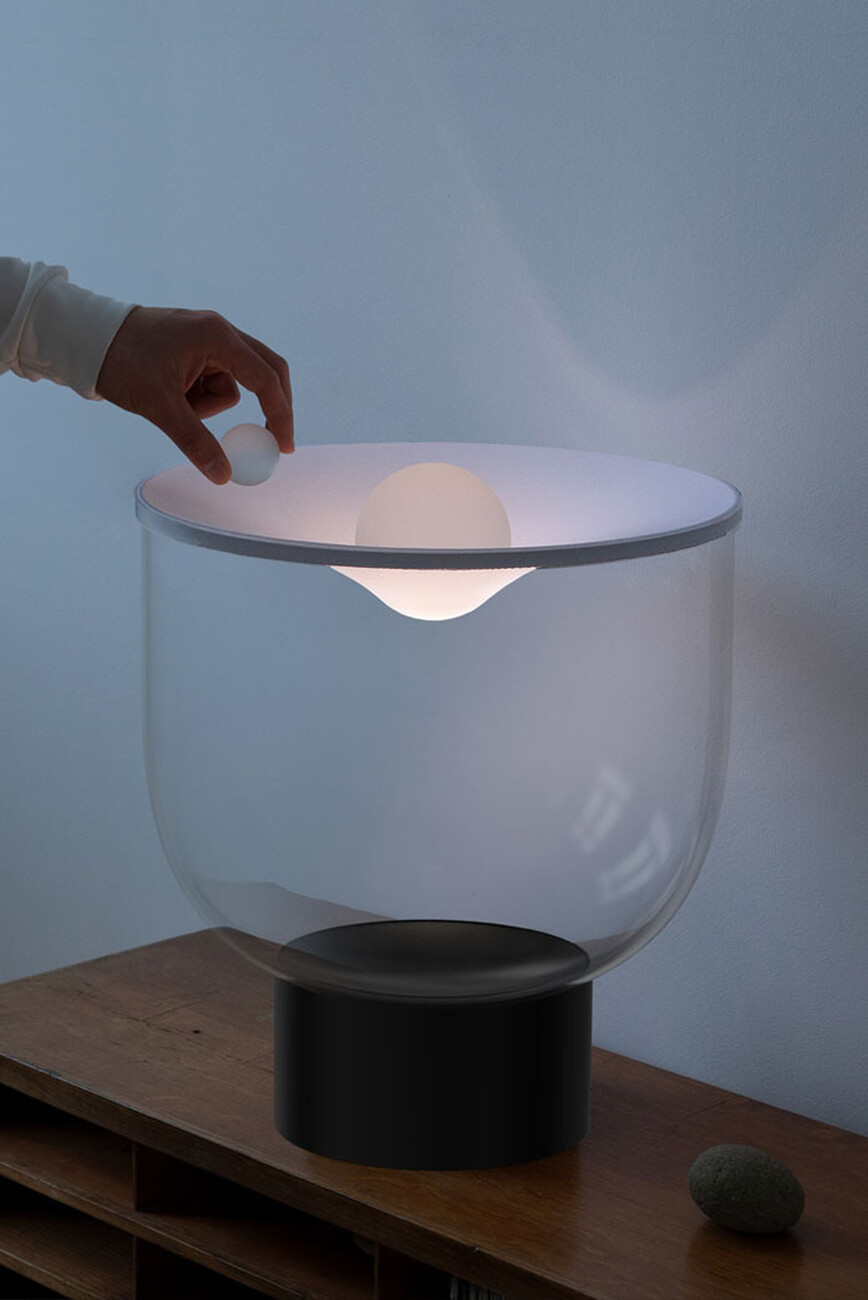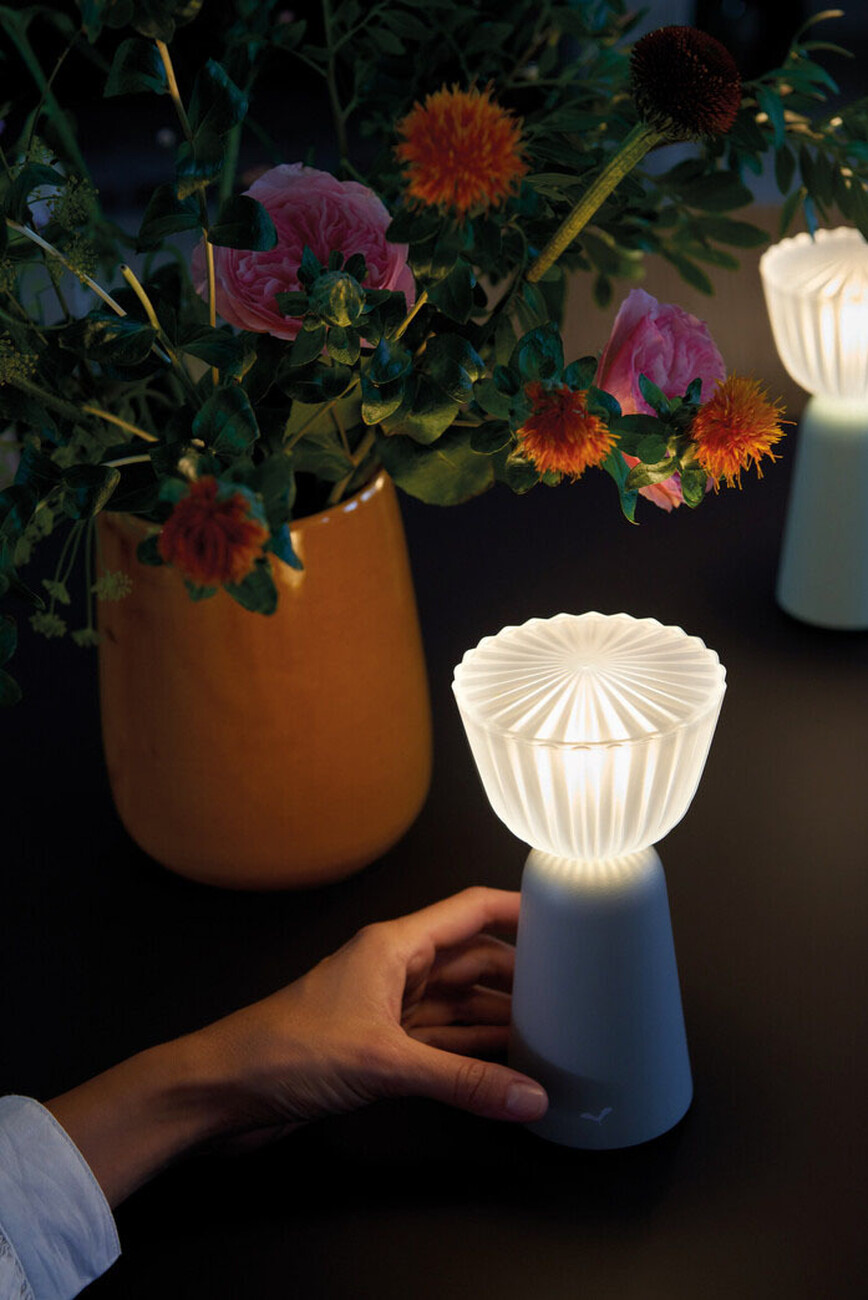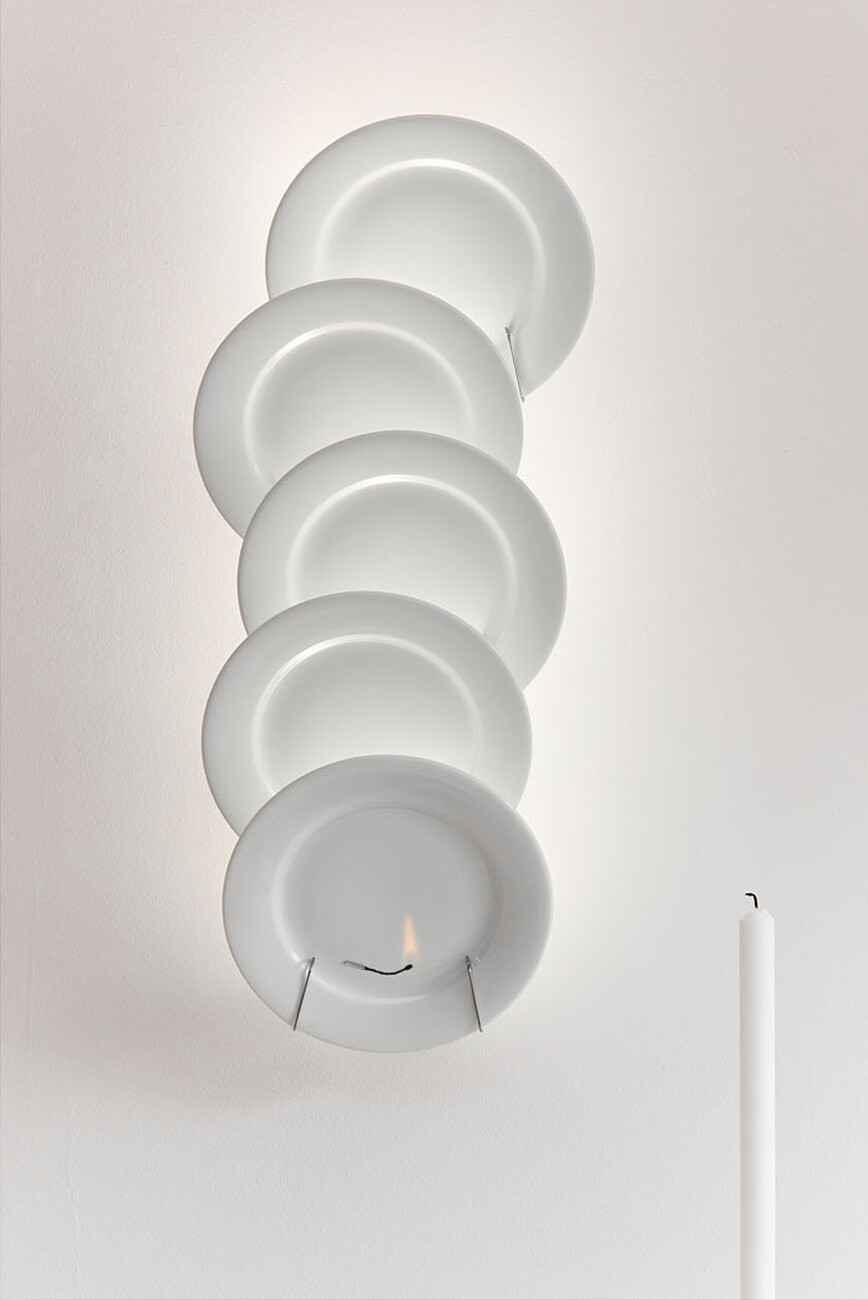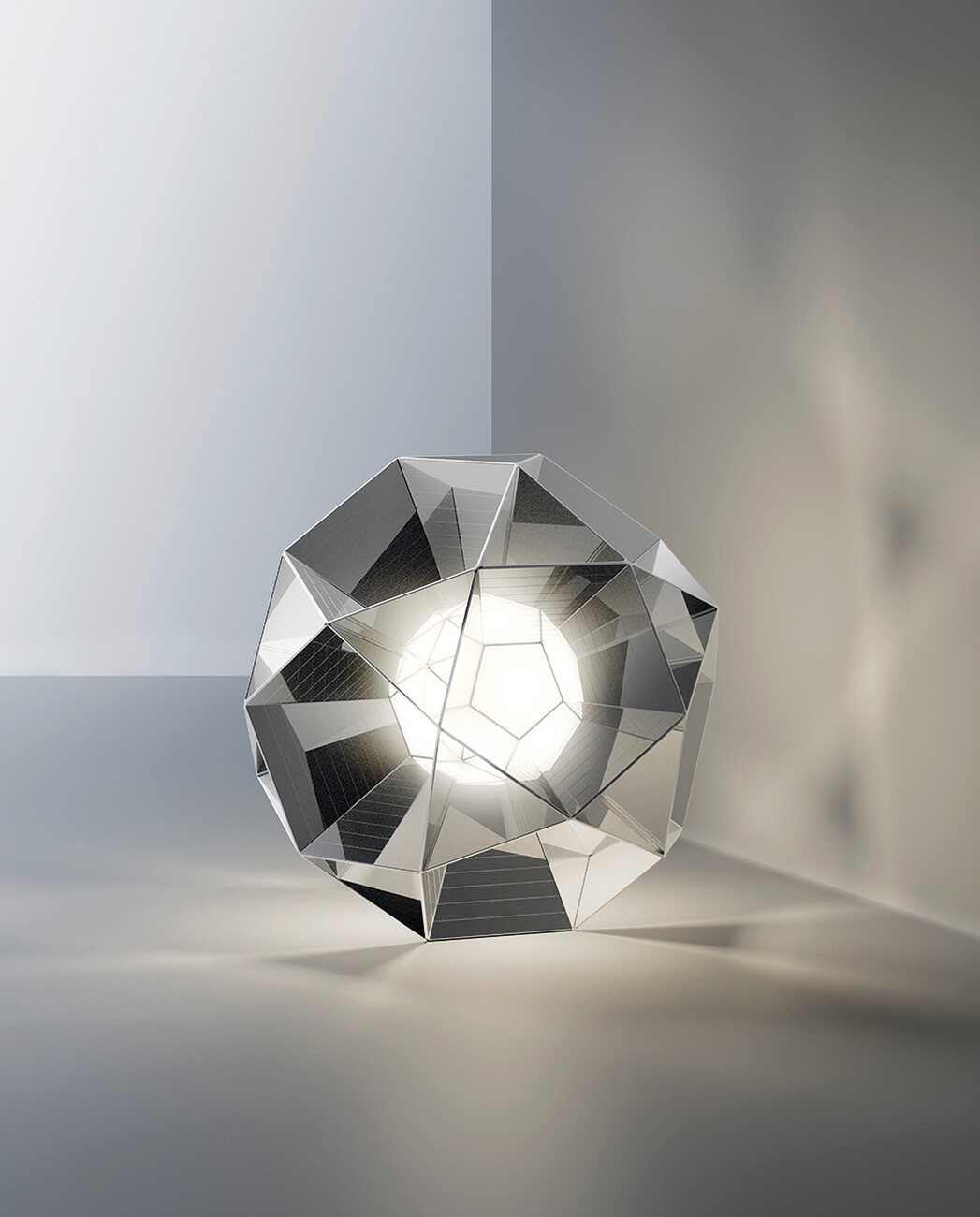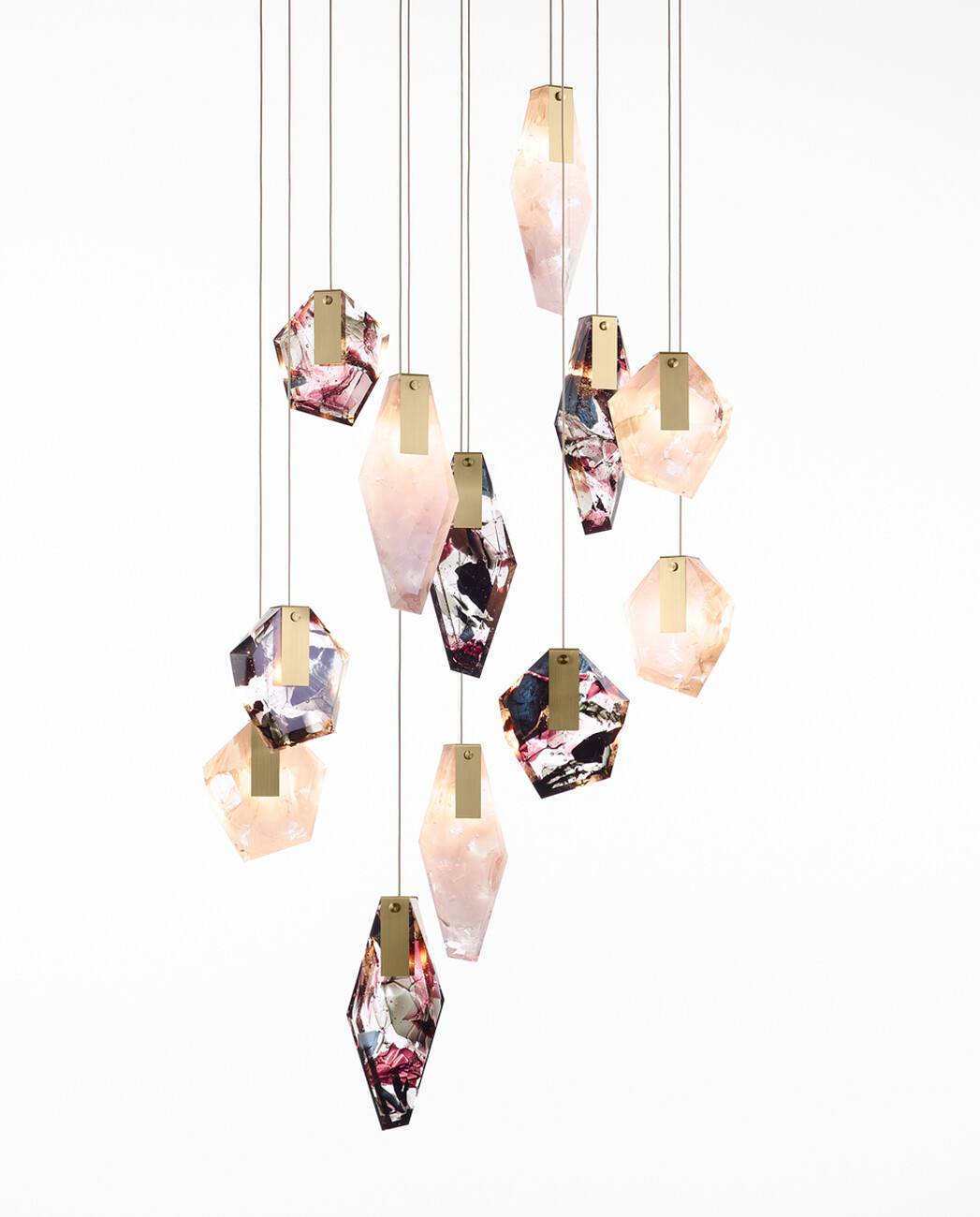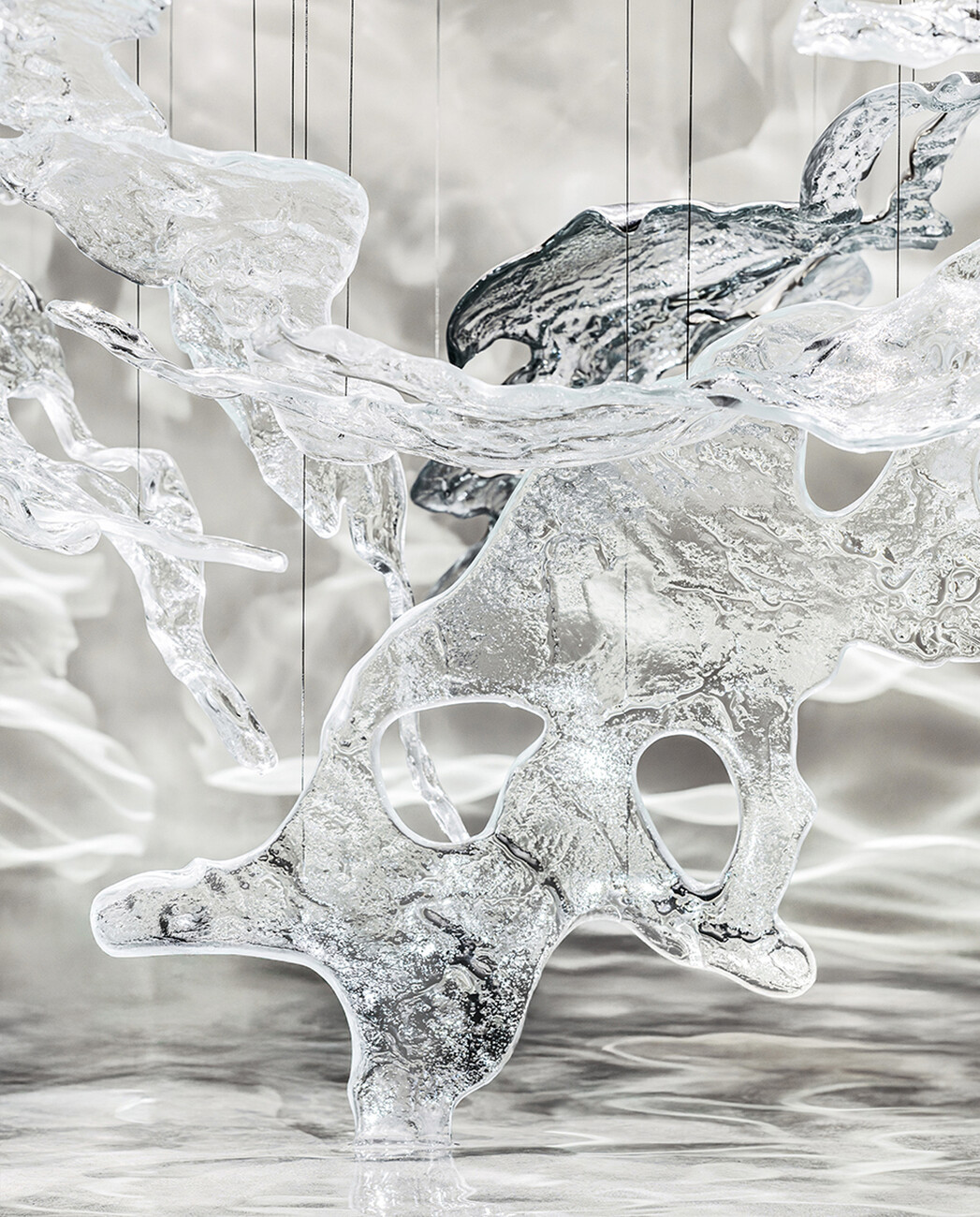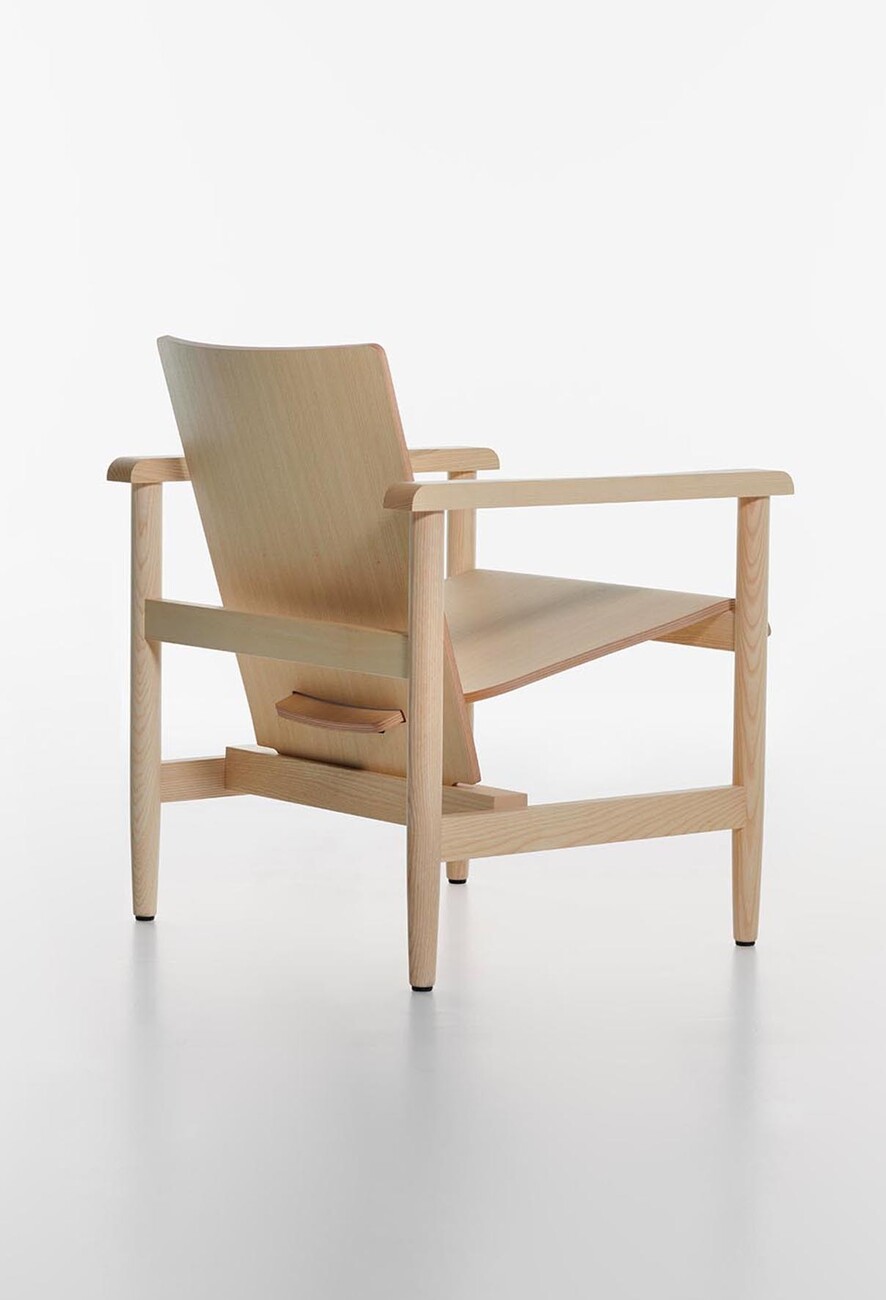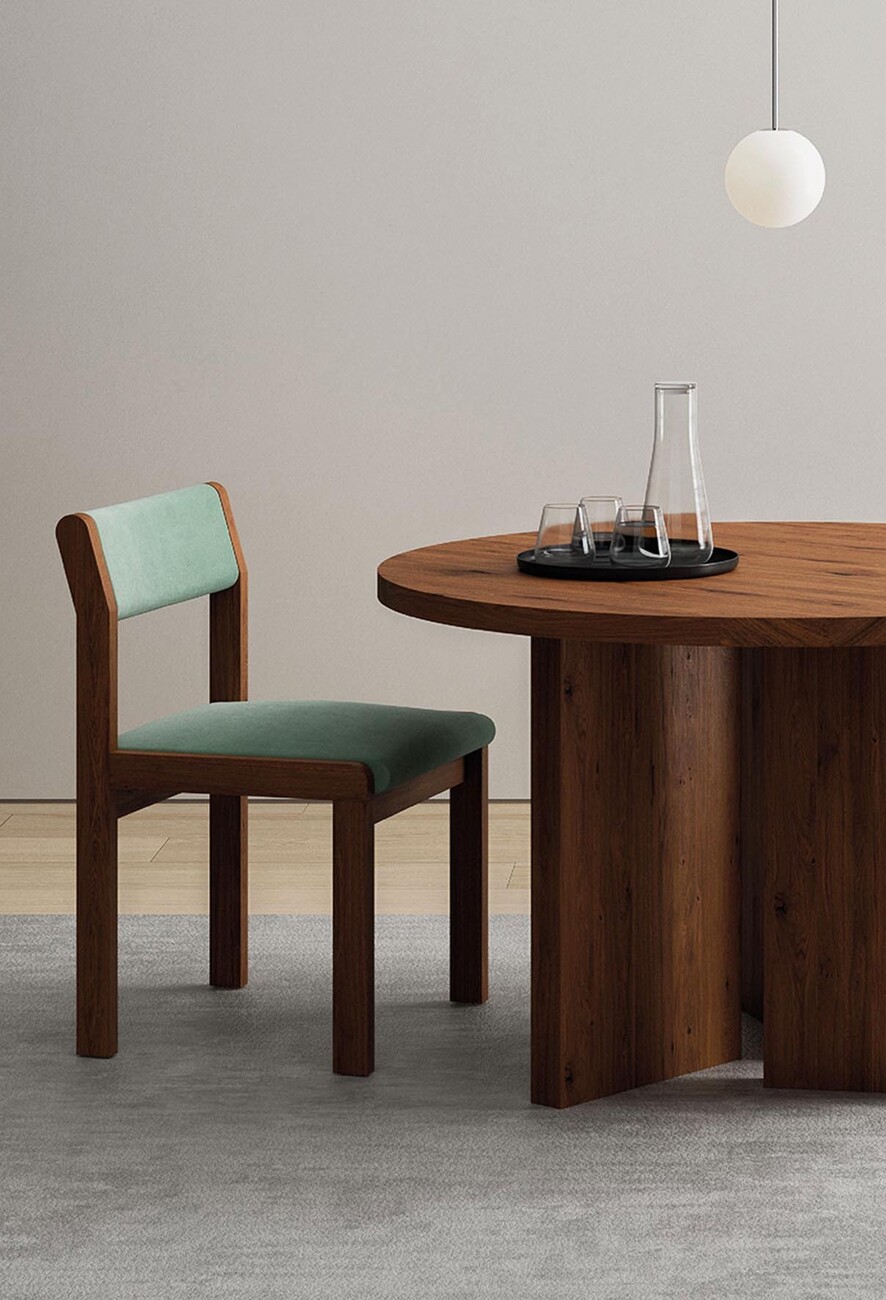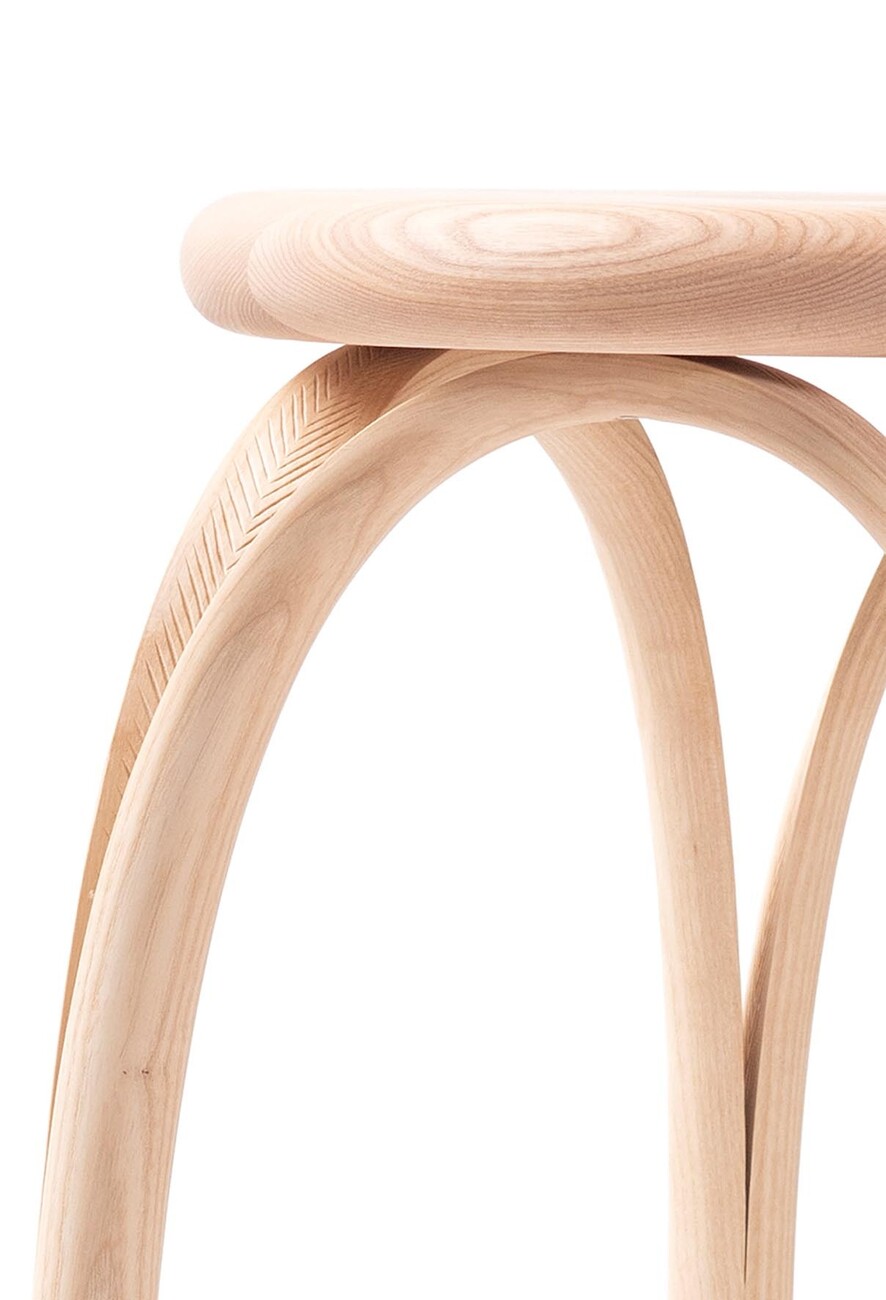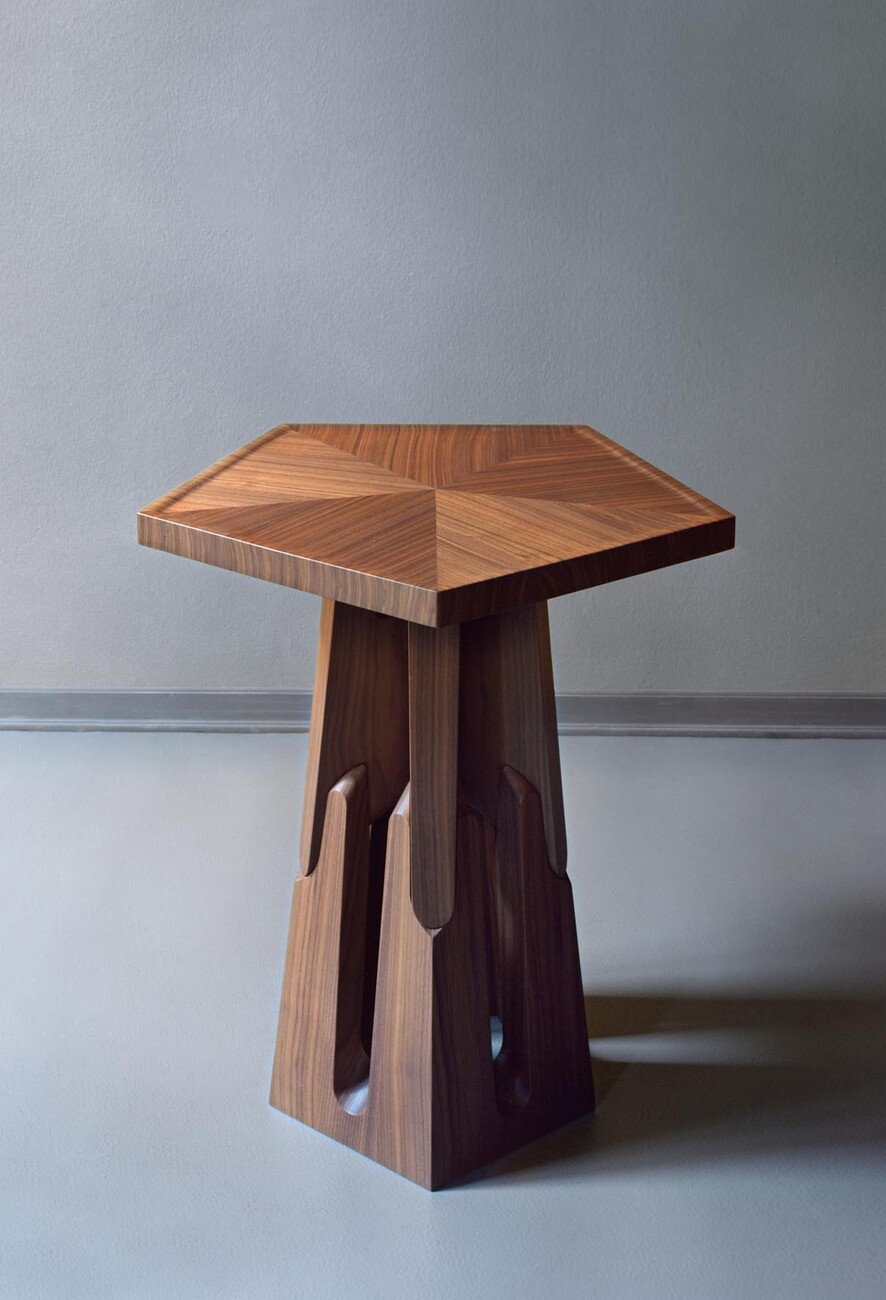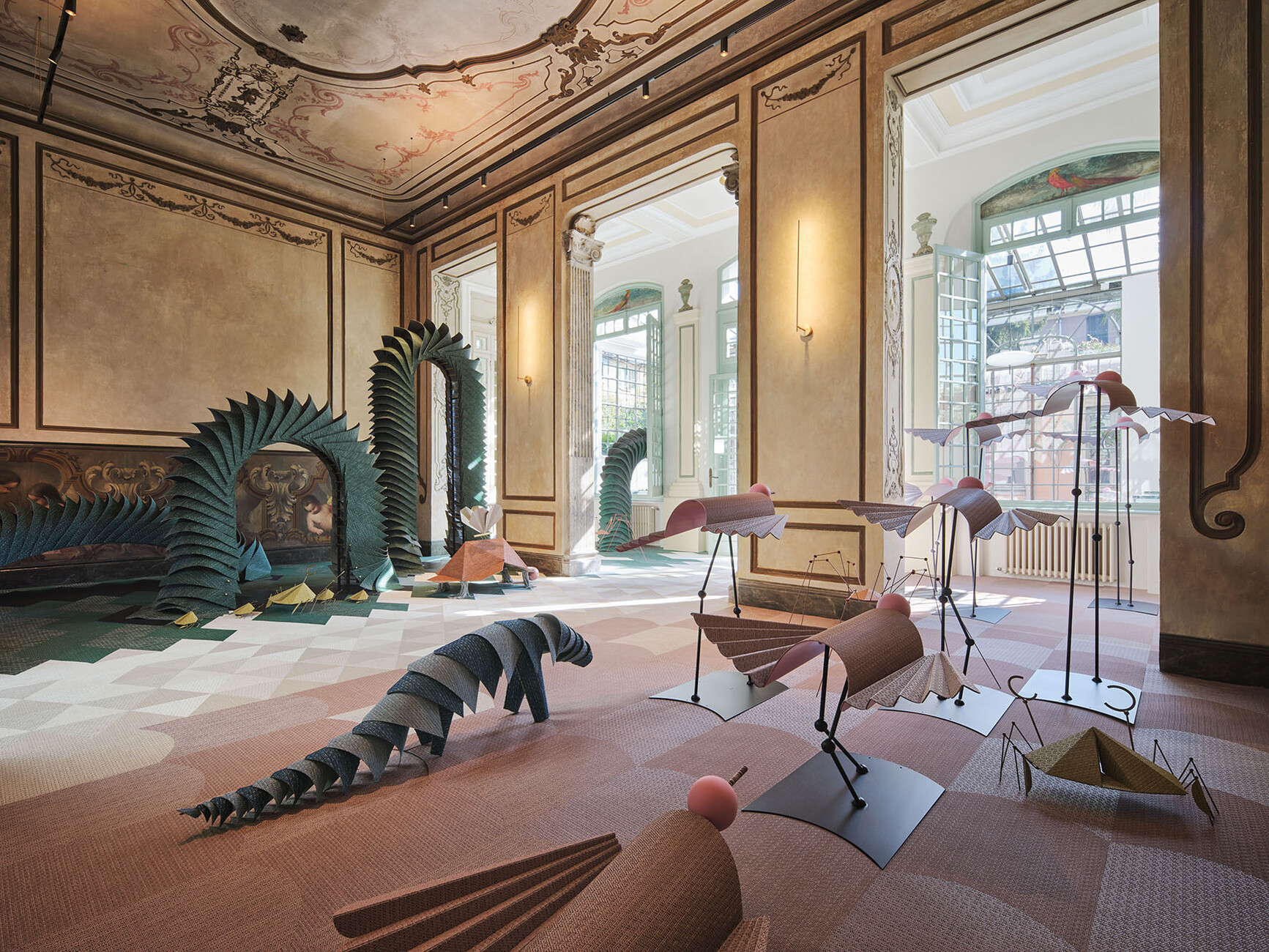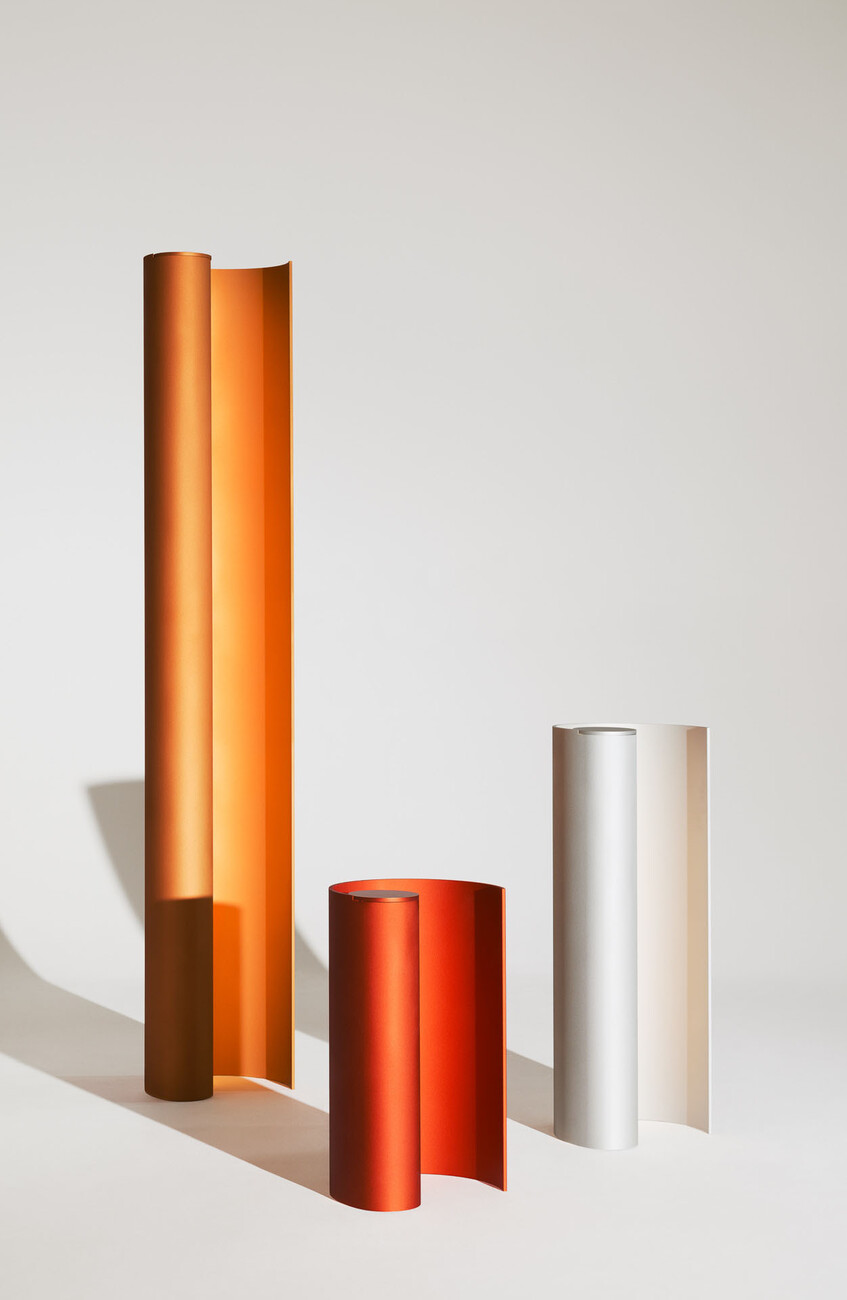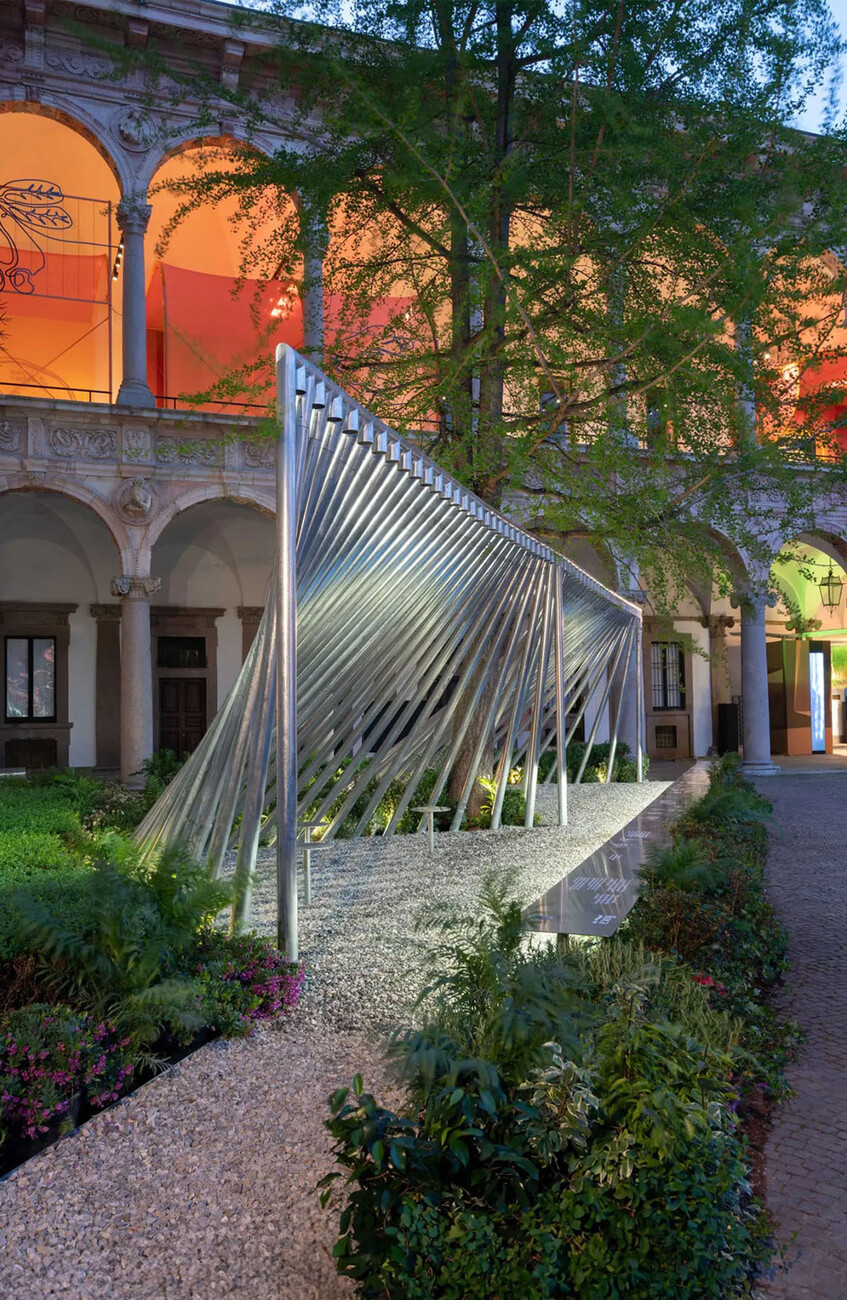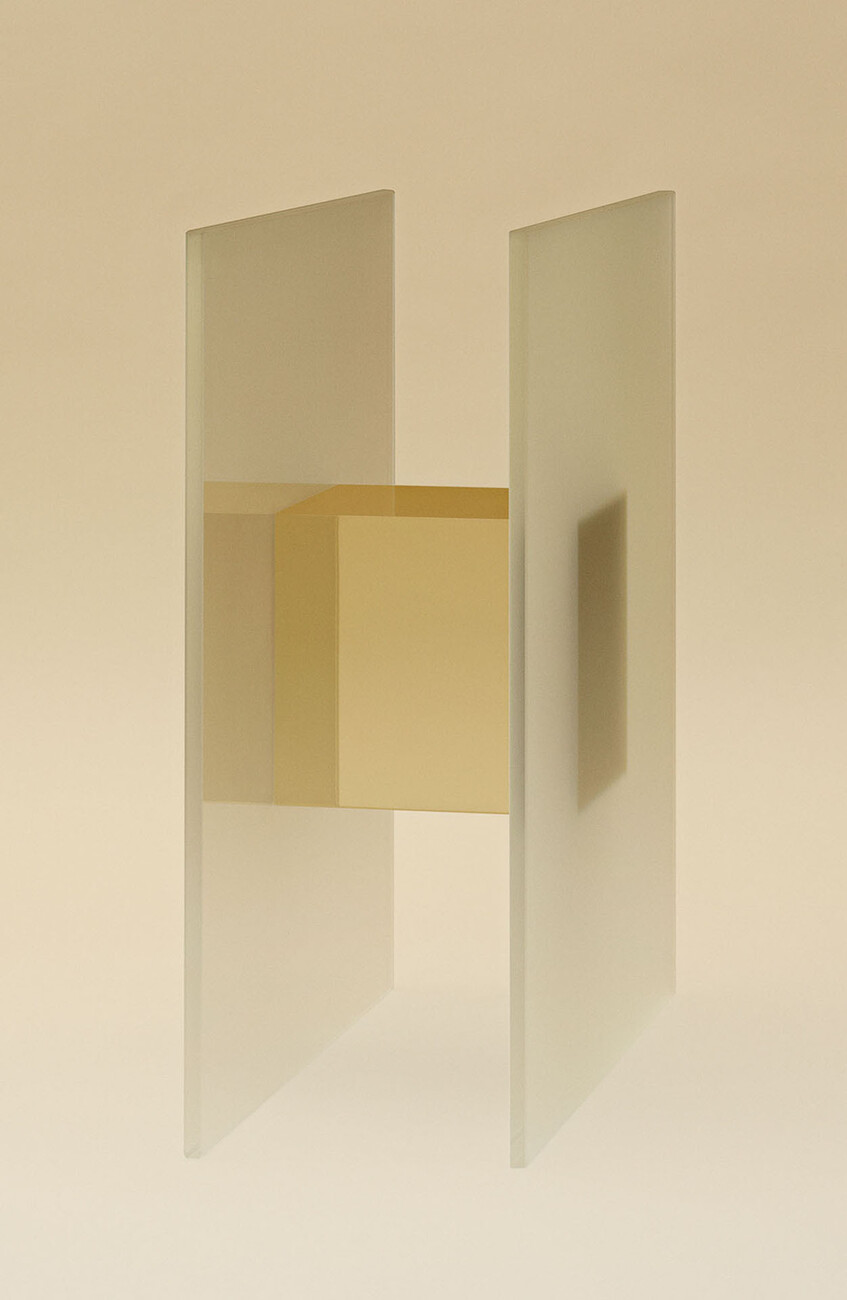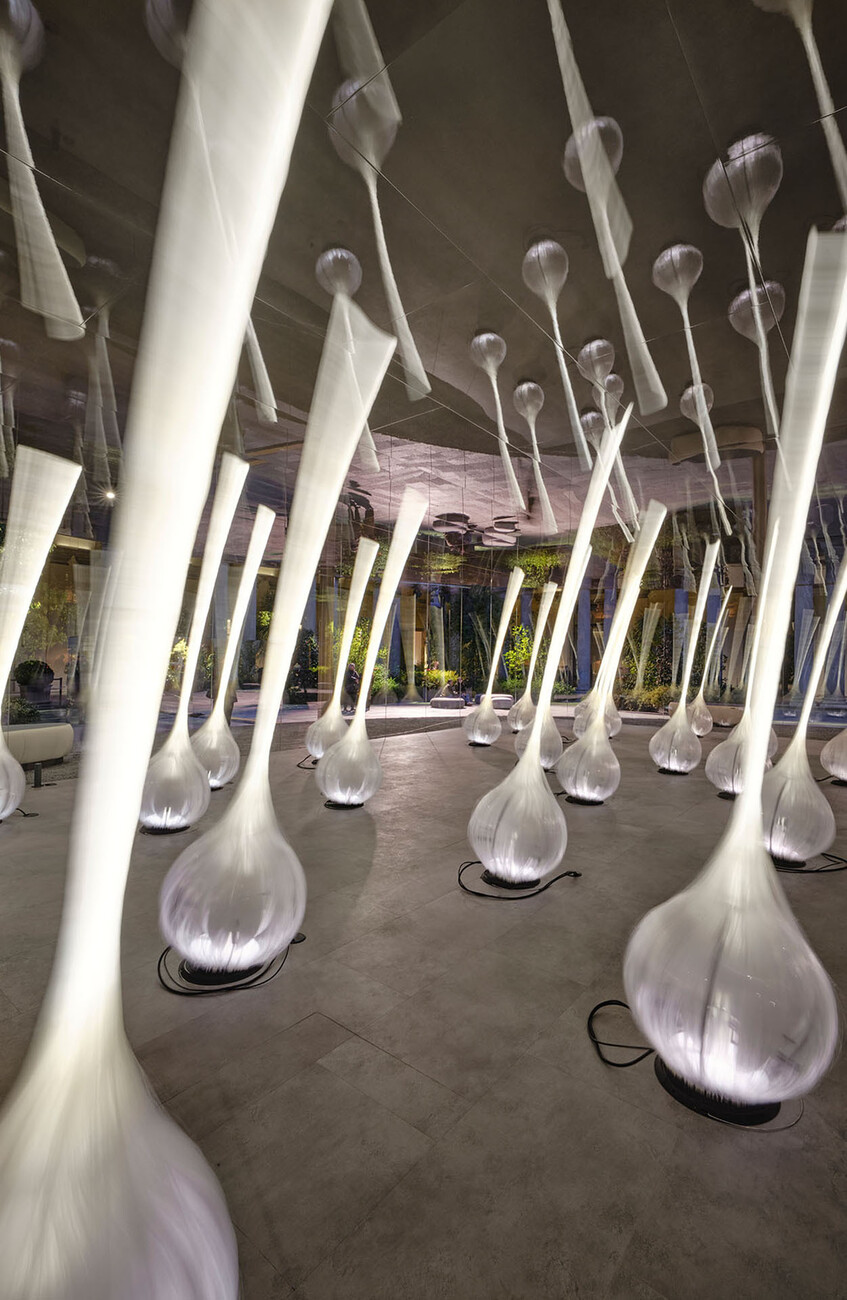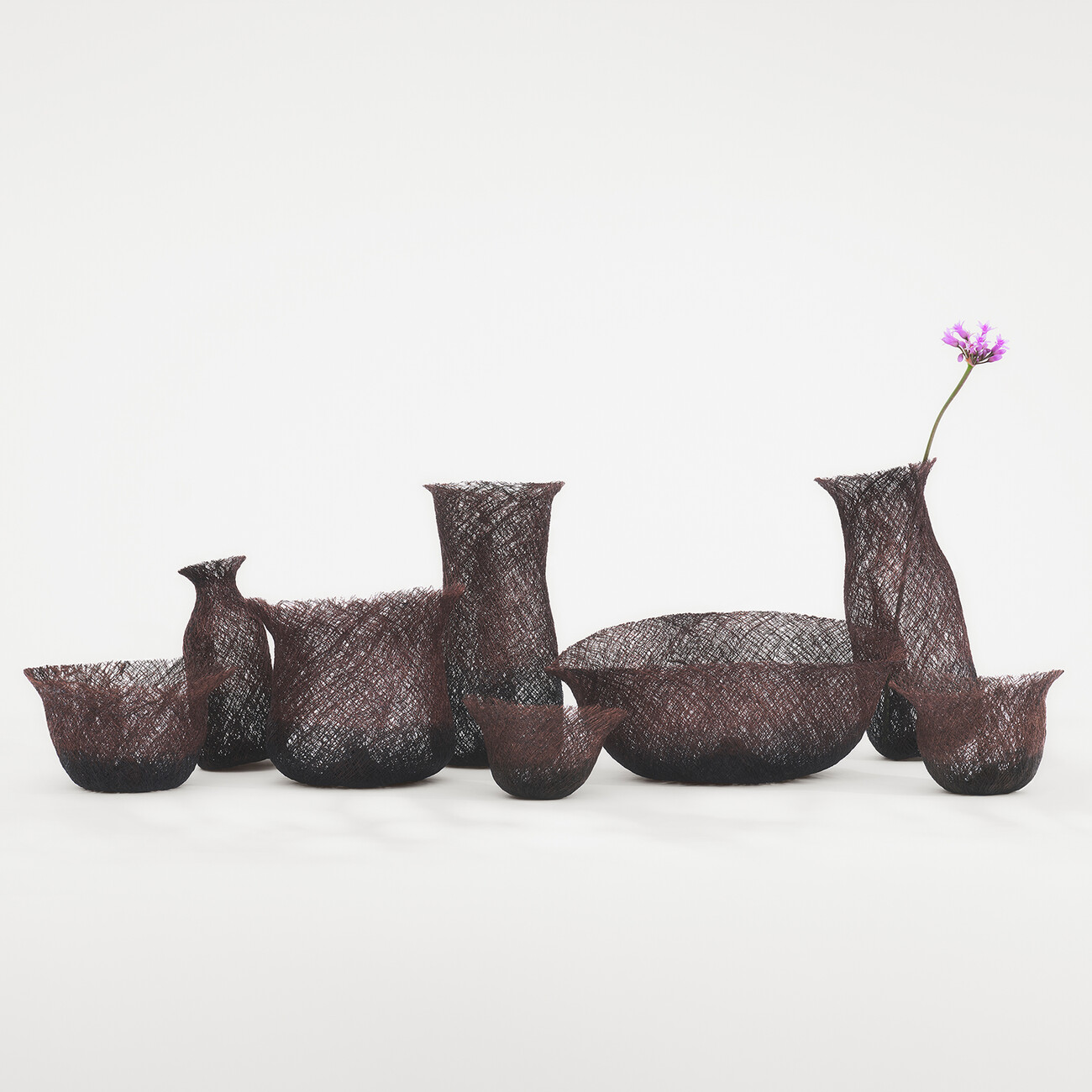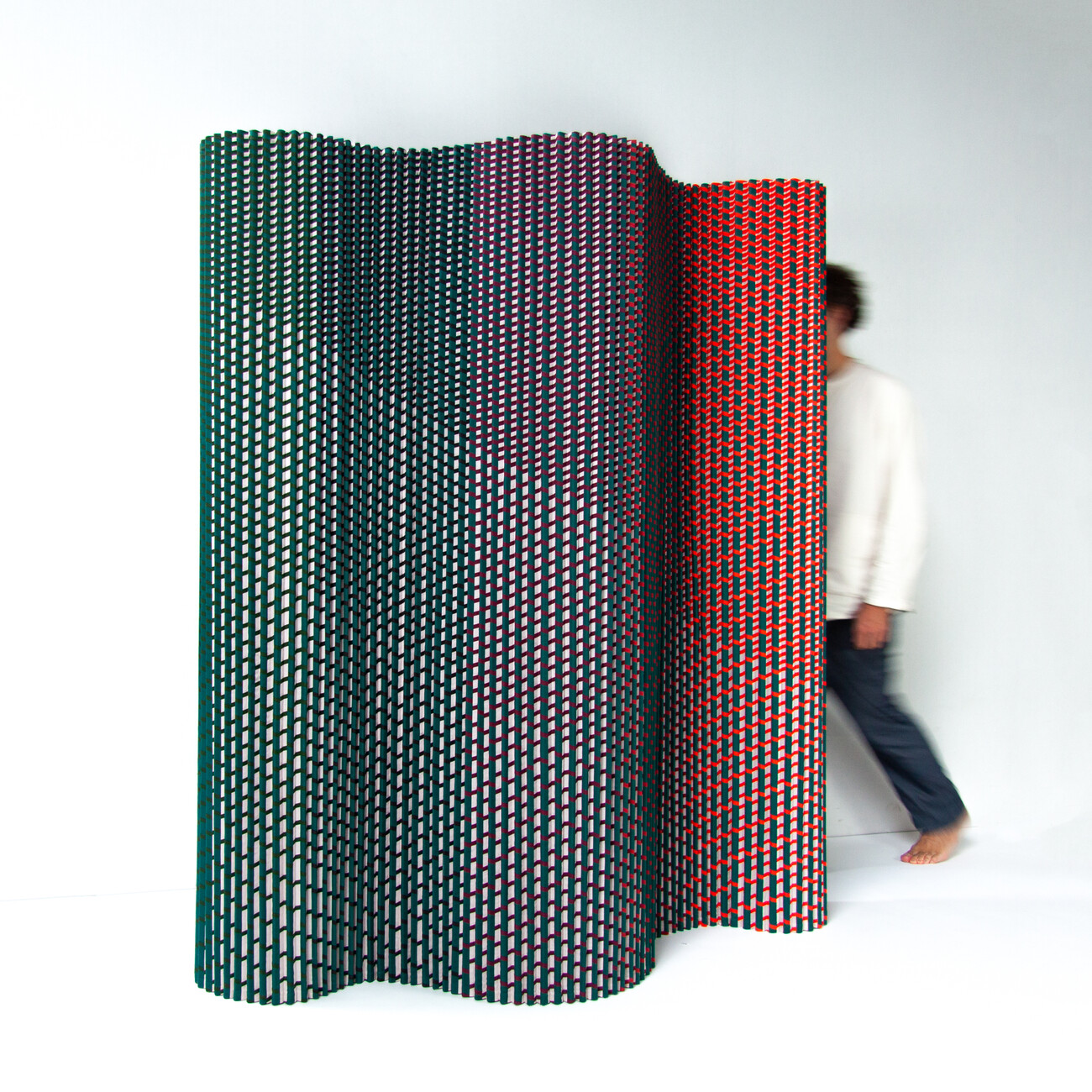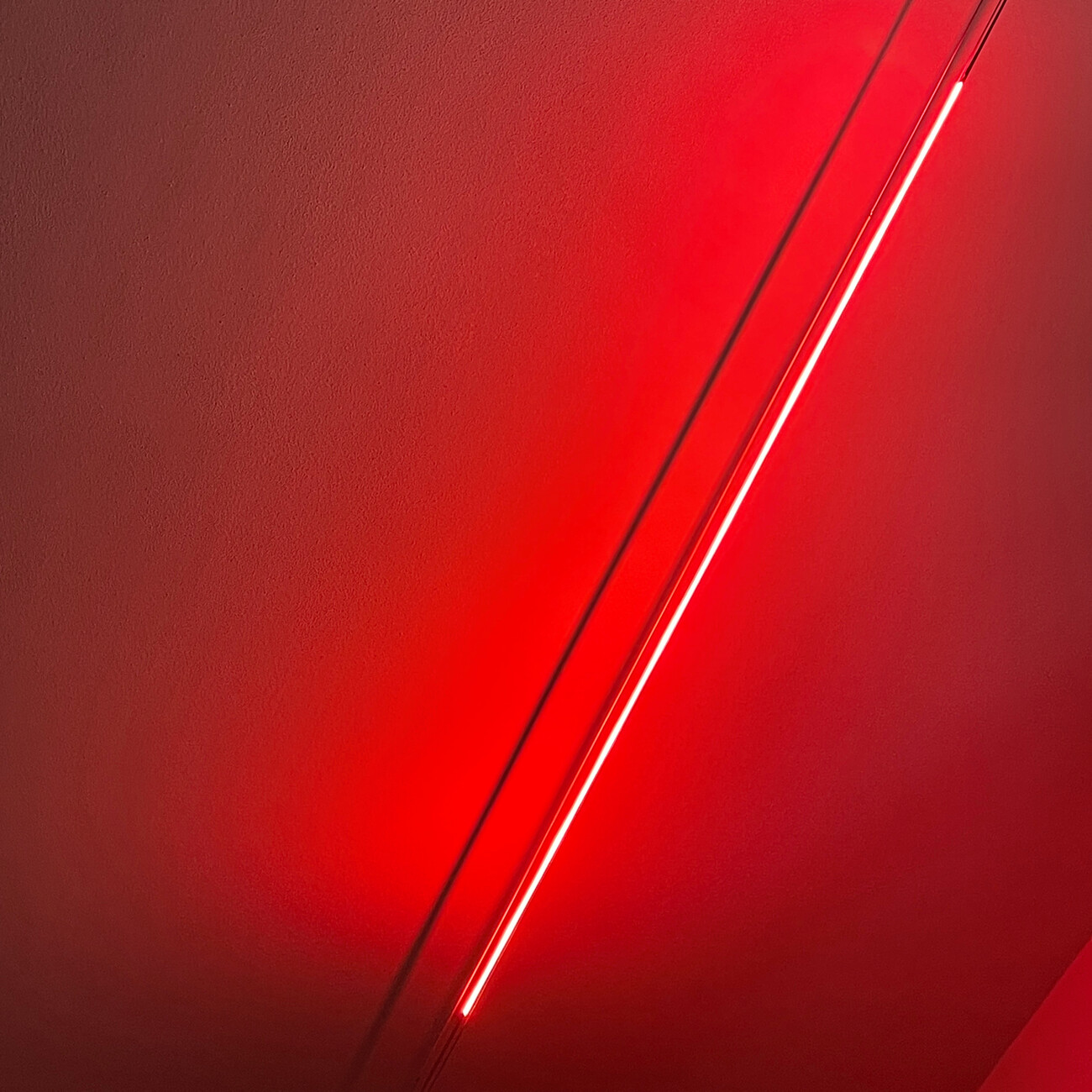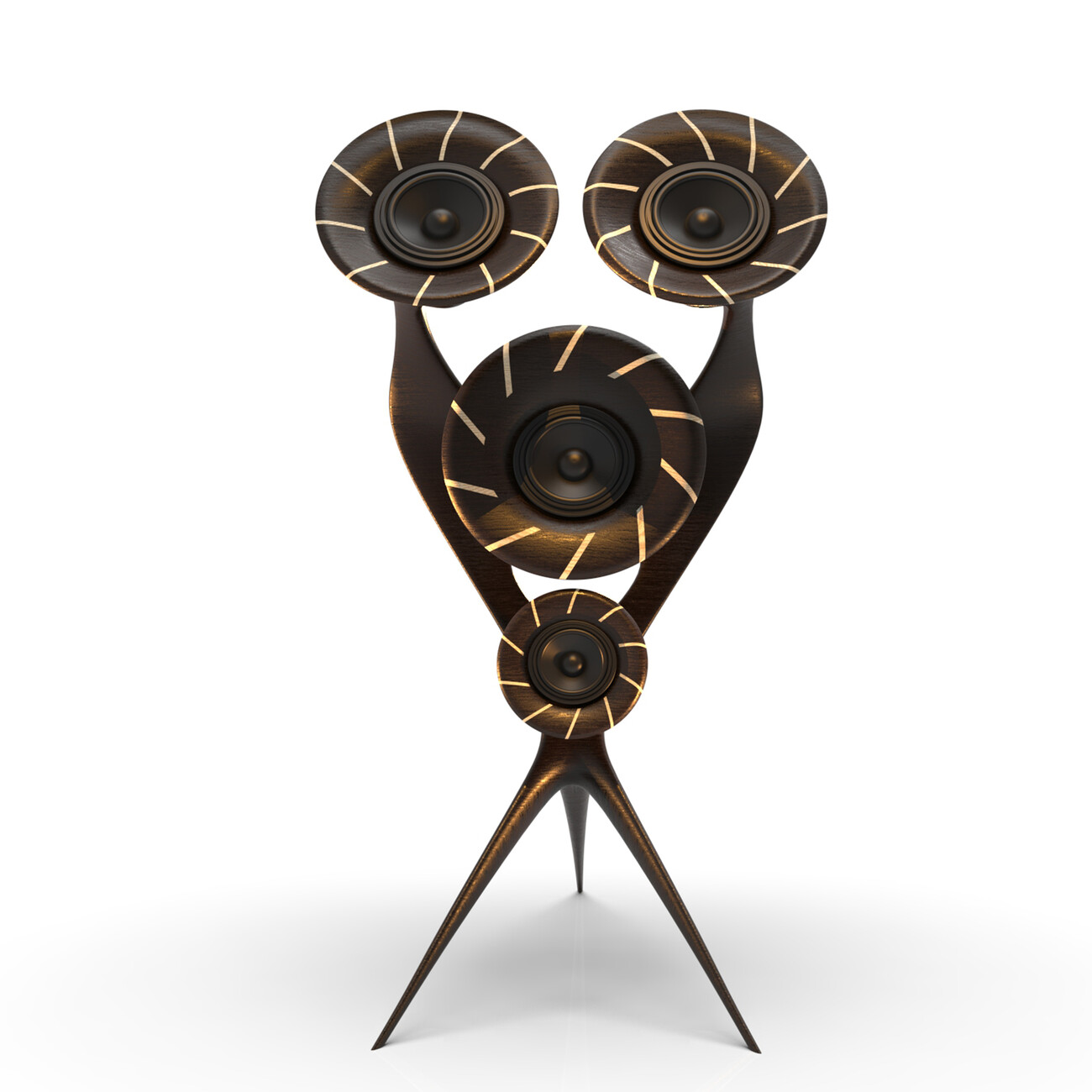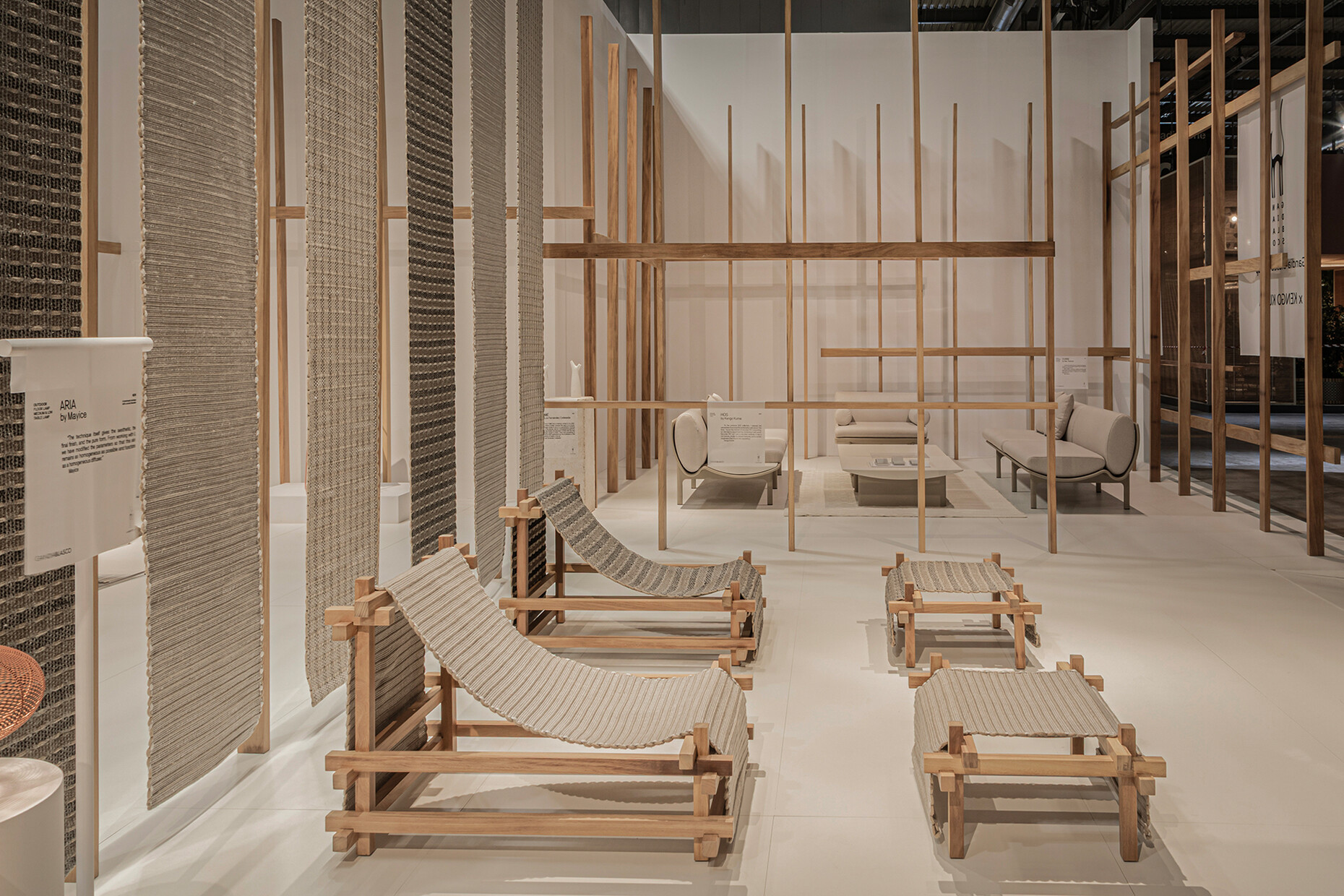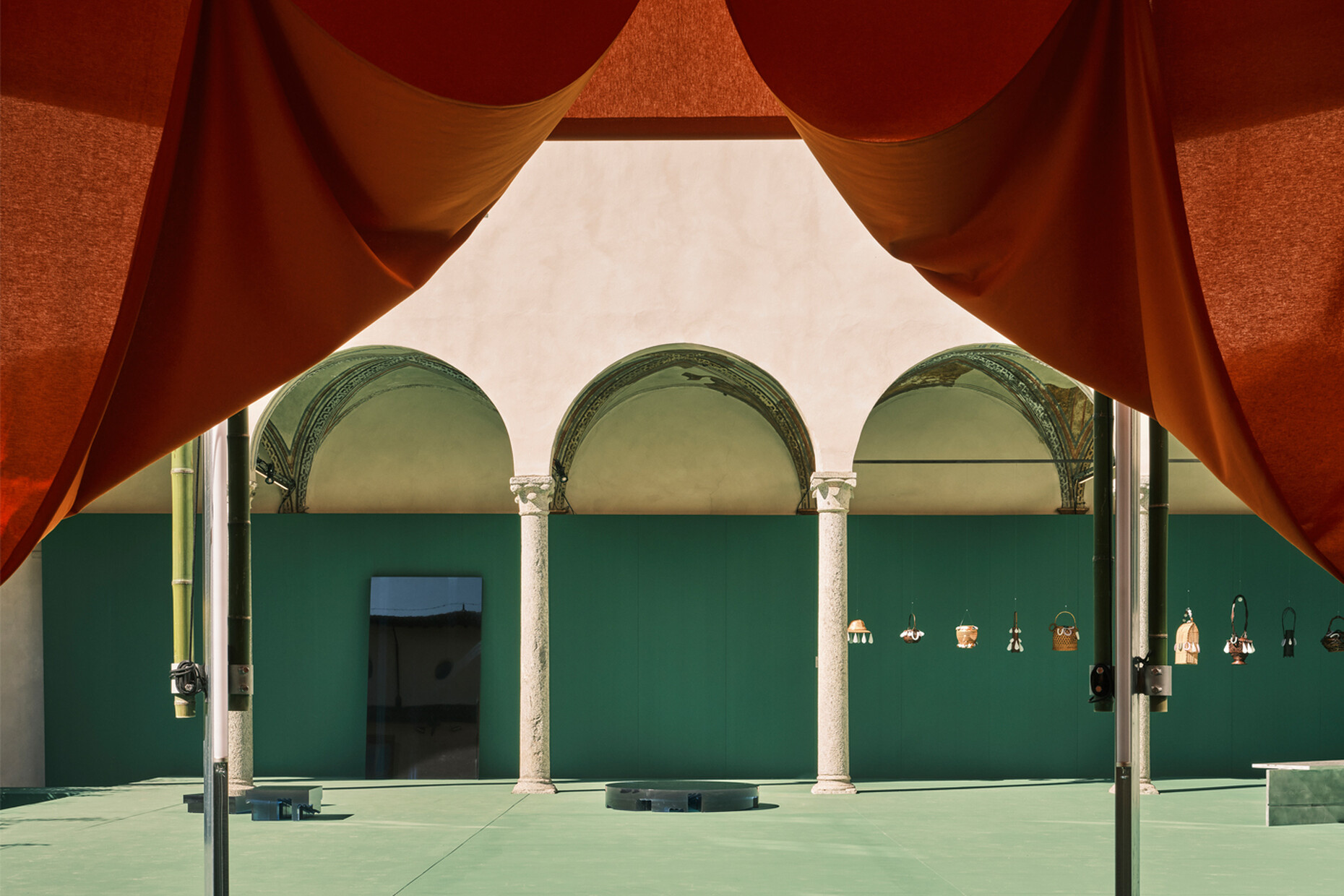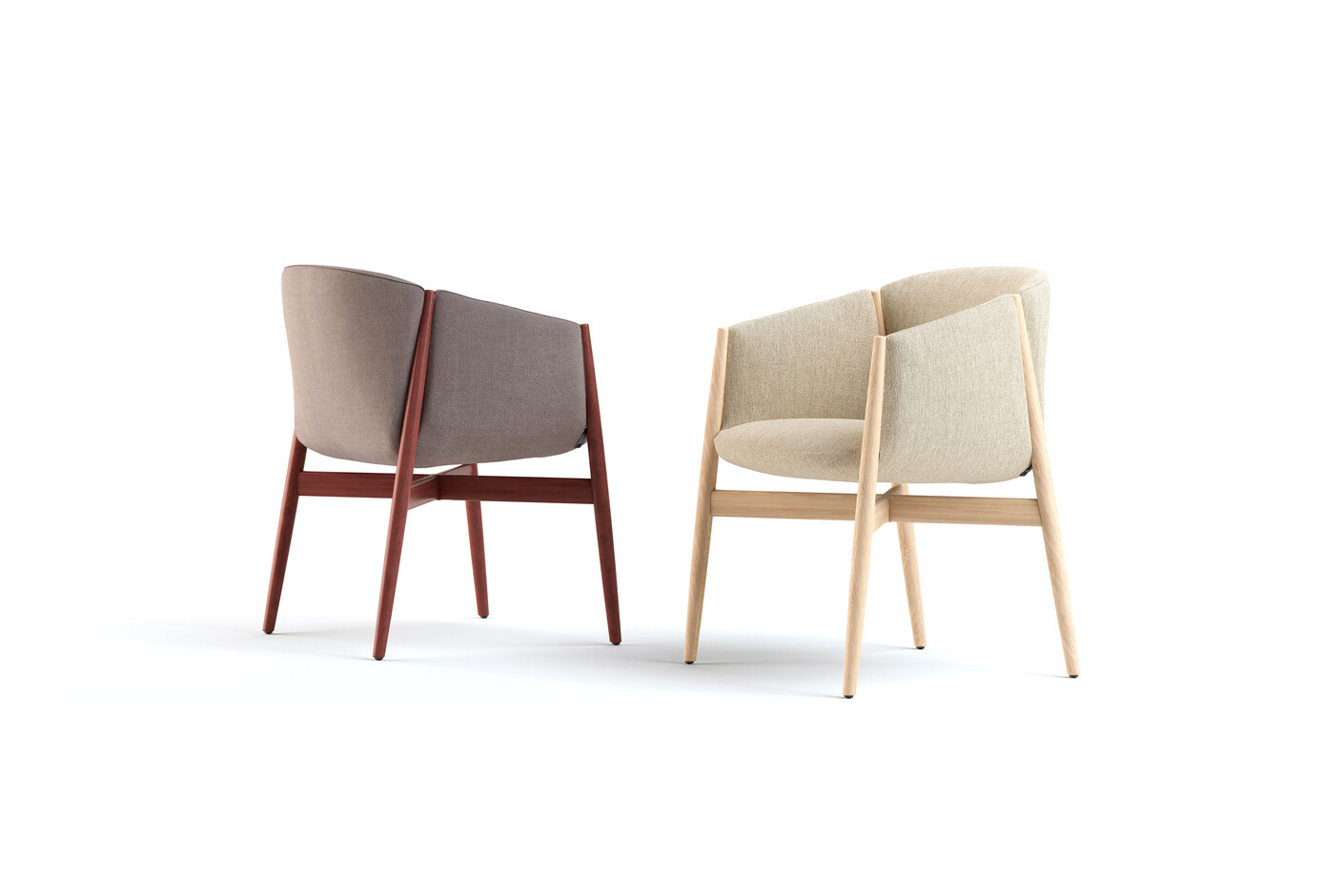REVIEW – SALONE DEL MOBILE & MILAN DESIGN WEEK 2025
New networks
Milan in April – the start of spring and the most intense week of the year for the design industry. What was previously only shared under embargo now opens its flowers overnight to form a magnificent bouquet that is spread across the exhibition centre and across the city and which must be explored in a continuous run. This year, 2,103 exhibitors from 37 countries presented their ideas at the Salone del Mobile, of which 306 companies exhibited at the Euroluce lighting biennial. The trade fair team also organised an extensive supporting programme, including four special projects – including the ‘Mother’ installation by Robert Wilson in the Museo della Pietà Rondanini – Castello Sforzesco, a complete work of art dedicated to Michelangelo's masterpiece. Equally impressive was the ‘Library of Light’ by artist and set designer Es Devlin, a performative experience that symbolised the value of knowledge with 2,000 books selected and donated by Feltrinelli in the Cortile d'Onore of the Pinacoteca di Brera. Oscar-winning director Paolo Sorrentino, accompanied by scenographer Margherita Palli and a soundtrack by Max Casacci, also created ‘The Sweet Wait’ at the exhibition centre, a surreal space with an abstract version of a heart at its centre, whose rhythmic beating fills the space acoustically. Lying on comfortable armchairs, you were transported to the centre at walking pace, filled with the tension of not knowing what will happen next and the struggle with the inner restlessness that constantly accompanies you during the Salone del Mobile.
Comfort with style
Being able to cope with the waiting room of the present while shaping the future is a task that creative minds face every day and their response to it was divided into two streams as they walked through the halls and showrooms in the city: back to what was and forward to new paths. The organic shapes and earthy colours of the sixties and seventies were given a slightly modified new lease of life, as at the Pedrali stand: Patrick Jouin translated the homage to the past and the nod to the future with the ‘Opale’ chair, whose silhouette is defined by a combination of leg, armrest and backrest made of solid ash or walnut wood. A handle is also set into the backrest. Comfort was a central theme in many shows, preferably framed in precise structures made of wood or chrome, as in the ‘Aristo’ chairs by Sebastian Herkner for ClassiCon with a backrest upholstered on two sides and framed by an elegantly curved tubular steel frame. In their ‘Kagu’ chair for COR, Jehs + Laub pulled the wooden legs made of either ash or oak up to the armrest and integrated them into the upholstered seat shell.
‘Villhem’ by Borselius & Bernstrand for Bla Station features a moulded seat shell and armrest made of laminated wood, which can be upgraded with upholstery for the backrest, seat and a neck cushion as required. Freifrau suspended the ‘Marie Lounge Swing Seat’ in two versions from the ceiling on black ropes, creating a carefree seating experience that can be customised in various fabric and leather covers. For Acerbis, Philippe Malouin created ‘Trench’, a collection of sofas and armchairs defined by a single flowing curve that shapes both the seat and the backrest. Together with Note Design Studio, Sancal designed a collection of benches, a chair and tables with a discreet appearance and many possible combinations, as well as the MUT design, a one-piece modular system whose seat and side table look as if they have been chiselled out of a quarry. Thanks to the soft upholstery and the alternation of curved and straight lines, it does not appear massive.
Rapid transformation
At the same time, versatile, space-saving design is in demand, as in the form of the two hybrid chairs by Werner Aisslinger for moveinBASE: thanks to a mid-century technology developed by Angela Staffa, which allows the chair to be converted from an upright sitting position to a relaxed lounge position, it is suitable for a variety of uses. The 2-in-1 indoor model is a voluminous and organic chair made of an upcycled cork composite, while the outdoor version is made of folded aluminium surfaces. With the ‘F-A-B’ chair, Färg & Blanche have designed a simple body that can be covered with a system of interchangeable covers. In the KNS & MAS Lounge in Capsule Plaza, Karimoku presented the prototype for the ‘WK Sofa Series’ by Wataru Kumano: an interplay between sofa and bench, made from lightweight cypress wood. The seat and backrest are placed on a wooden frame and the reversible backrest allows various fabric and colour combinations. Fast presented the ‘Unduetre’ collection designed by Francesco Meda and David Lopez Quincoces – a modular sofa system that can be adapted to different configurations in just a few simple steps. Richard Lampert presented an evolution of Tim Schütze's ‘Eiermann’ table that can be adjusted in height either electrically or manually.
Outside and inside
Many companies decided to take on the challenge of design that knows no spatial boundaries: Fermob presented its first outdoor kitchen and the portable LED table lamp "Swiing", among other things. CMP Design created ‘Griante’ for Pedrali, a chair made of Iroko wood with a hand-woven seat and backrest made of polypropylene yarn, which was specially developed for outdoor use. Also on the stand was the portable battery-powered lamp ‘Filicudi’ by Andrea Pedrali, which consists of an extruded aluminium column and a polycarbonate diffuser, the light of which can be dimmed. Without the diffuser, the column can be used as a flower vase, while up to ten diffusers can be stacked for charging at the same time - magnetic, wireless and space-saving. Konstantin Grcic has designed the archetypal ‘Bishop’ chair for Magis from one-millimetre-thick sheet steel that is laser-cut, folded and welded into a solid structure and is available in various colours. The glossy finish, which makes the furniture look like candied fruit in rich red, blue, green and orange, was not reserved for ‘Bishop’ alone - whether as an accent or on the large surface, the light reflections on the glossy surfaces caught the eye at many stands, as with the finish of the ‘Table Basse en Forme Libre’ by Charlotte Perriand for Cassina.
Roberto Lazzeroni designed ‘Meridies’ for Expormim made of FSC®-certified sapele wood with a wide seat and curved armrests and backrests, which, together with the matching side tables made of ceramic and travertine, crosses the threshold between the rooms. In the 4,000 square metre showroom, including Paola Lenti's magnificent garden, visitors were able to relax on the “Alma” armchairs and sofas by Francisco Gomez Paz. The load-bearing upholstery is made of hard-wearing Rete fabric and is attached to the steel structure with plastic buttons and Rope yarn cords. The very comfortable polyester fibre seat cushion is covered with Whim fabric in individual designs and is firmly attached to the frame using fibreglass rods. Extremis, meanwhile, provides a cosy two-seater cocoon with ‘Cabio’, whose canopy can be pulled down like a beach chair to provide protection from the sun and wind when needed. With ‘TAYA’, Rolf Benz offers a lounge sofa in two versions and covers for indoors and outdoors, which can be perfectly adapted to rooms of any size by combining individual modules – and can also be customised thanks to flexible seat and back cushions. In their design idea for Rolf Benz, Svend Loevbjerg and Henrik Pedersen from the Danish design agency Norsmind pursue the approach of ‘simply extending the living area a little further outwards – without limits or boundaries. With unrivalled indoor seating comfort.’
Developing ideas
Evolving existing designs – some time ago, this was a process that received little attention from the public. However, in the course of the continuing uncertain economic situation, so many manufacturers decided this year to rethink familiar designs instead of investing in supposedly uncertain projects that a new matter of course emerged: not having to present an area full of new products at every Salone del Mobile and Milan Design Week. Jil Sander deserves the crown in this discipline: the German fashion designer reinterpreted the tubular steel classics ‘S64’ by Marcel Breuer and Mart Stam from 1929/1930 and gave them a contemporary elegance for the ‘SERIOUS’ and ‘NORDIC’ lines with high-gloss lacquered wood details, refined tubular steel frames, seats and backrests made of Viennese wickerwork or matt leather in nuanced, coordinated colours. These are accompanied by the ‘B 97’ tubular steel seating tables from 1933, which have also been gently modified.
In the magnificent setting of Villa Necchi Campiglio, Occhio presented ‘colours by Occhio’, which lend a new expression to the ‘Gioia’ series in the nuances blu, verde, rosso and viola. Based on the ‘Catifa’ design by Lievore Altherr Molina, Arper offered a new version of ‘Catifa (RE) 46’ in eight colours and a choice of frames, with a seat shell made from 100 percent recycled plastic. For the seat, Arper has designed a new cushion made of ‘BREATHAIR’, which is also available for outdoor use. The polyester-based thermoplastic elastomer is elastic, breathable, hygienic, water-resistant and recyclable. Plank now also produces the stackable ‘Monza’ armchair by Konstantin Grcic made of oak with a leather cover. In the showroom, Wagner presented both the modular ‘D2 bespoke interior system’ by Gonzalez Haase AAS and Stefan Diez and the ‘D1 Office Pro’ by Stefan Diez as well as the results of the collaboration with the Swiss family business Fischbacher, whose expertise in luxurious textiles was used to create cosy settings. These include the prototypes ‘W-Kiss’, ‘W-Tire’ and the ‘Nesting Sofa mini’ by Steven Dahlinger. USM presented the ‘USM Haller Soft Panel’, textile panels that are fitted with magnets and can be clicked into the tubular structure of the modular furniture system – without any assembly work or additional fixtures. They are made of synthetic fibre, with a 40 percent share of recycled Seaqual® Fibres marine plastic, and also have a positive acoustic effect on the room.
Please touch
In the halls of the Euroluce International Lighting Exhibition, the invitation to haptic interaction surprised visitors with numerous luminaires: First and foremost, ‘Maap’ by Erwan Bouroullec for Flos, consisting of a paper-like, ultra-light Tyvek cover with a light source designed for standard bulbs. The tear-resistant body can be reshaped again and again, can be attached with magnets and provides atmospheric, flat light. At the same time, the ‘Linked collection’ by Michael Anastassiades at Flos, a modular glass system in hook form, whose elements can be hung inside each other for lighting, was also on show. Pedrali presented ‘Kawara’ by Yusuke Kawai, a lighting collection made of extruded aluminium, which is formally inspired by the traditional Japanese roof tile and offers numerous variants as a pendant luminaire, horizontal or vertical luminaire and as a floor lamp. The light can be directed as desired by hand using the adjustable modules. In addition to its new outdoor collection by Patrick Norguet and estudi{H}ac, Lodes also presented the new ‘MAP’ ceiling and wall lighting system, which was developed with Geckeler Michels and flexibly combines different modules. From the start module, the fabric strip fitted with special conductors is stretched freely between the various lighting points and feeds the entire system, whereby the power supply source always remains concealed. The ‘Vika’ columns by Khodi Feiz for abstracta dampen noise and emit pleasant light at the same time. They offer a wide range of variations, whether as a single object, for installation in corners or as a room divider. ‘Tortuga’ by Moritz Putzier for Martinelli Luce is a small wall light made of aluminium that resembles the shell of a turtle and can be rotated 360 degrees and tilted 43 degrees to direct the light. The ‘Dud’ wall light by ZP Studio | Eva Parigi e Matteo Zetti can also be flexibly adjusted. Its shape refers to the typographic characters ‘D’ and ‘U’ and can be rotated independently of each other on a common base. With ‘Grammoluce’ by Min Dong and Habits Design at Martinelli Luce, you can playfully access the light: the borosilicate glass structure is covered by an elastic fabric that is deformed with crystal glass spheres of various sizes placed on it, thus serving as a switch and dimmer for the lamp. The number and weight of the spheres placed on the fabric change the intensity and colour tone of the light emitted.
In addition to minimalist systems, Davide Groppi presented the electrified race track ‘Race of Lights’, which supplies small car lamps with energy. The course can be customised as desired thanks to its attachment with magnets and becomes the basis for an individual lighting design. With the ‘System Bind’ by Martín Azúa, Vibia makes it possible to change the lighting concept in the blink of an eye and to meet even difficult room requirements precisely. The ‘Poudrier’ wall light by Philippe Negro for DCW éditions can be opened and closed with a polished brass flap, while the light is diffused over the entire depth through a thick glass disc. In addition to a new version of ‘Fire’ as a mobile table lamp made of anodised or polished aluminium and mouth-blown glass, Grau also brought a small, round LED spotlight made of high-quality aluminium to Milan. This creates a cosy atmosphere with its blue-free light and promotes sleep. ‘Boltons’ by Herzog & de Meuron for Artemide consists of an adjustable metal disc and a conical glass body into which a delicate air bubble is incorporated. The upper reflector is freely adjustable by means of a magnetic sphere, allowing precise control of the light. Meanwhile, Mathias Hahn has designed the new ‘Gambosa’ luminaire made of steel with a wide range of colours for Marset. As a modern interpretation of the table lamp with simplified structural elements, they appear to balance on top of each other. The cable runs from top to bottom, while a clip guides it. With ‘Jasna Kuchnia’, the Ingo Maurer team developed a luminaire made of five porcelain plates, which, backlit with an LED line, sets the scene for an everyday element and, when switched on, reveals just how translucent ceramics can be with a small detail: A small, dark match is depicted on the front plate. When switched on, the light seems to ignite it – a subtle illusion that emphasises the playful character of the design. The plates can also be removed from the composition.
Fragments and kaleidoscopes
The reinterpretations of lighting that created new perspectives with filigree elements were also fascinating: Like BIG with ‘Arctic’ for Artemide, a collection whose structure resembles an Archimedean solid with no visible outer surfaces, made up of pentagonal elements. The mirrored surfaces are aligned and face each other, creating an interplay of reflections that changes depending on the perspective. Lasvit showed ‘Splash’ by Martin Gallo, a glass light installation made of fused glass, which, composed of many individual parts, explores the emotional resonance of water and its flowing, ever-changing forms. ‘I wanted to capture how a single drop can become something big, how the light dances on the surface and how water, like glass, harbours both stillness and energy,’ says the designer. The ‘Loomo’ wall light by Maxim Velčovský, whose glass disc shows the imprint of a textile structure and provides soft light, could also be discovered at the stand. For the new ‘Fragment Line’ and ‘Fragments’ collections, Bomma combined recycled glass fragments to create linear and dynamic luminaires. In its show, Preciosa Lighting demonstrated the diverse customisation possibilities of modular lighting design, such as with ‘Crystal Links’, a network of handmade crystal bicones and slender metal tubes. A-POC Able Issey Miyake and Atelier Oï showed ‘TYPE-XIII Atelier Oï’: artistic, wave-shaped table and ceiling lamps made of wire and fabric. Michael Anastassiades presented a new series of modular lights called ‘Cygnet’, ‘Frame’ and ‘Floor Mobile Chandelier’ for his eponymous brand at the Jacqueline Vodoz and Bruno Danese Foundation, made of delicate structures, like two equilateral paper triangles illuminated by a hidden light source. Snøhetta created ‘Aura’ for Viabizzuno: consisting of transparent ‘light prisms’, the light itself takes centre stage here.
Knocking on wood
Furniture made of wood enjoyed growing popularity at the Salone del Mobile and Milan Design Week: Kettal , for example, presented the ‘Kari’ collection designed by Konstantin Grcic – side tables made of teak whose sophisticated construction immediately catches the eye. While both tables are fitted with a round top, their bases have two different geometries: Cylinders and pyramids. Mattiazzi presented ‘Stelo’ by Sam Hecht & Kim Colin, a contemporary interpretation of the Windsor Captain's Chair made of ash or beech wood. This year, Nordiska Galleriet (NO GA) presented its new furniture collection NO GA Projects during Milan Design Week. The exhibition also included the furniture series by the Milan-based architecture firm NM3, which is realising its precise, industrial approach in wood for the first time. The chairs and tables are made from either Douglas fir or Afromosia and offer two different forms of expression. Knoll announced the collaboration with architect and sculptor Jonathan Muecke: The ‘Muecke Wood Collection’ is an ensemble of wooden dining chairs and tables, with refined craftsmanship that constructively builds a single, round wooden profile on top of one another. ‘Muecke's sculptures play a central role in Knoll's showrooms and lend the interior a special architectural sensibility and composition. With its first serialised furniture collection, Knoll can integrate these artistic principles into the homes and projects of its customers,’ says Jonathan Olivares, Senior Vice President of Design at Knoll.
Pedrali presented the ‘Blume Sideboard’ by Sebastian Herkner, for which he took up the refined flower-shaped profile made of extruded aluminium from the collection of the same name. It has four curved doors made of plywood with ash or walnut veneer, which are combined with legs made of extruded aluminium in various anodised or powder-coated finishes, as well as a top made of composite marble or high-pressure laminate. Yves Béhar designed the ‘Rye’ stool for Zanat, a contemporary twist on the classic bentwood piece of furniture. Its round legs split and bend to form arches that support a solid wooden seat. ‘With ‘Rye’, I wanted to allude to the way trees branch out when two branches grow from one trunk. The result is legs that are structurally connected by beautiful arches. The stool, including the foot ring, is made of solid wood and is available in different types of wood and finishes. Nature and structure come together in a continuous movement, because you can't see where the structure begins and ends,’ says the designer about his first design in bentwood.
Plank also offered sophisticated, surprising structures with an aesthetic that has no expiry date with the ‘SOL’ and ‘SOMBRA’ chairs by Konstantin Grcic: designed as a pair with vertically aligned legs, horizontal armrests and a sloping seat made of solid ash wood, they are based on a basic idea such as an ingenious plug-in system, but have different characters: agile and compact, generous and relaxed. Herzog & de Meuron designed the furniture collection ‘La Magie du Bois’ with interior design studio Marta Sala Éditions Milano for the installation ‘The Secret Soul of Useful Things’ in the Museo Bagatti Valsecchi – part of which is a sculptural wooden side table consisting of two parts that are inserted into each other. Studio Omi Tahara created the ‘Pages’ bookshelf for Potocco with supports made of solid, carved wood with soft, asymmetrical lines. e15, which has had great expertise in solid wood furniture since its inception, presented the classic-looking ‘ALDE’ chair by David Thulstrup made of oak with an upholstered backrest and seat, the round club chair from the collection and the striking ‘KANAME’ dining table by Philipp Mainzer, which is available in round, oval and rectangular shapes. The limited ‘Hos’ collection by Kengo Kuma could be explored at Gandia Blasco: The deckchair and stool were made from wood joints and covered with fabrics made from recycled PET fibres, following the Japanese architectural tradition. Another architect who has enriched this year's Salone del Mobile and Milan Design Week with industrial and product design is Maria Botto: together with Alias, he has produced the ‘Saturno’ table collection and the ‘Zeta’ stool made of MDF, both with a strong expression - ‘Zeta’ shows the shape of the letter ‘Z’, the base of ‘Saturno’ is made up of four triangles, the tips of which come together in the centre on a structural steel cylinder.
Colour and imagination
This year, rugs with graphic patterns, such as the ‘ADJA’ collection by Jan Kath made of wool and silk, which follows the principles of the Bauhaus with generous dimensions, clear lines and a subtle colour palette, spread out under the feet of the guests. Mattiazzi presented the ‘Zona’ collection by Annahita Kamali and Florian Böhm, hand-knotted carpets made from New Zealand wool, for which they chose gorgeous, non-toxic colours in a geometric pattern. Bolon and Object Carpet also presented their collections in an unusual way: Object Carpet showed ‘Mediterraneo’ as part of the installation ‘Trilocale - La Casa dell'Architetto’, a collaboration between architects Matteo Thun & Antonio Rodriguez like Marie Claire Maison Italia magazine in the historic rooms of the Galleria d'Arte Moderna in the Villa Reale. Bolon immersed visitors in a lovingly designed fantasy world in the installation ‘Exodus’ by Luca Nichetto and JoAnn Tan, in which the sustainable woven floor coverings were brought to life as mysterious anthropomorphic creatures. Among other things, BD Barcelona presented the ‘ECLIPSO’ shelving collection by Jaime Hayon with retro charm in brown, red, blue, beige and green, whose rounded shelves are held by two columns and are therefore both minimal in form and maximum in expression.
Showing processes
Among the extraordinary projects in the ‘Capsule Plaza’ exhibitions was Hydro's ‘R100 Project’: following the launch of the world's first 100 percent post-consumer aluminium in 2024, the company is shifting its focus to optimising the environmental footprint of transportation. Designers Sabine Marcelis, Keiji Takeuchi, Cecilie Manz, Daniel Rybakken and Stefan Diez have created a collection of mono-material aluminium products ranging from home accessories to chairs and furniture components. All products are made from recycled ‘Hydro CIRCAL 100R’ aluminium, which comes from a radius of 100 kilometres. Konstantin Grcic also presented his new platform ‘25kg’, for which he produces radically conceived design concepts under his own name – undefined ‘things’ that, like ‘thing 1’ and ‘thing 2’, can be a stool, a holder, a bench, or none of the above. ‘I feel a strong urge to realise ideas that drive the discussion forward and perhaps even spark controversy. I want to bring these things into the debate. I believe there is a place for them,’ says Konstantin Grcic. Also impressive was the ‘Trace of Water’ project by Honoka (winner of the SaloneSatellite Award 2023) and Aqua Clara at Palazzo Litta as part of the MoscaPartners Variations design exhibition. The team explored the potential of reusable bottles for water dispensers as an upcycling material and visualised its applications for an optimised circular economy in architecture and design. Il Tornitore Matto by Alessi placed an important spotlight on a human process that is often overlooked in design with the exhibition ‘The Last Pot’ in the Biblioteca Ostinata: a collection of urns created by 10 international designers. Curated by Alberto Alessi and developed in collaboration with Giulio Iacchetti, the collection includes sculptures by Michael Anastassiades, Philippe Starck, David Chipperfield, Naoto Fukasawa, Daniel Libeskind, EOOS, Mario Tsai, Audrey Large, Michele De Lucchi and Giulio Iacchetti himself. The results are urns that combine aesthetics and symbolism and encourage us to return to the origins of our once decorative culture of remembrance with a design that does not ignore death.
In general, the Milan Design Week was also worth a visit off the beaten track, such as the ‘Vienna Vibes’ exhibition by Galerie Zippenfenig, which exhibited many ideas by designers from Vienna in the basement of the Erotika Boutique, such as the ‘Tide Chair’ by ante up and Fantoplast made of recycled plastic sheets, the ‘bonbon’ side objects such as ‘nougat’ by studio högl borowski or the ‘Flybar’ pendant lamp by studio re.d. Studio Drift presented ‘Drift Us’, an immersive installation in collaboration with Audi: the robot-supported art installation in the courtyard of the Hotel Portrait Milano, in the form of oversized blades of grass, reminded visitors that they are in a constant dynamic dialogue with their environment. The synchronised movements were based on human breathing and heart rhythms. ‘Wind is the driving force of evolution and innovation in nature. Without movement, there is no progress,’ says Studio Drift. Like last year, Bocci exhibited in an enchanted building from the early 20th century in the Zona Vincenzo Monti and celebrated its 20th anniversary with a show curated by David Alhadeff. The diverse works of Omer Arbel could be discovered in new installations such as works by Orior, Calico Wallpaper, Shore Studios and Christopher Farr.
In the pop-up exhibition ‘Reflecting’, Decor Walther presented a collaboration with photographer Marc Krause in a small haberdashery shop in Milan's Brera. The show features vacuum-packed products that refract and reflect in the light, as well as reflection and the break with existing patterns of product presentation. The installation ‘A Beat of Water’ by BIG - Bjarke Ingels Group and Roca let water flow in a closed circuit through 300 metres of galvanised steel pipes with a height of 3.5 metres, thus focusing on its power - a dynamically shaped pavilion made of pipes that traces the natural movement and aims to create an awareness of the high value of the resource. The cloud-based intelligent water management system ‘Roca Connect’ was at the centre of the concept. Meanwhile, a ballet school in the backyard of Via Palermo 1 provided the stage for ‘Atmosphere’ by the Ippolito Fleitz Group for Jung: a monumental, abstract disco ball including a hall of mirrors, equipped with hundreds of Jung light switches, invited guests to interact with it. By activating the switches printed with graphics and letters that referenced internationally known song lyrics, the atmosphere in the room changed - an experience of light, sound and poetry. In keeping with this, the team presented the new ‘Jung Unique × Ippolito Fleitz Group’ switch collection, which shows excerpts from song lyrics that the team associates with the theme of light - creatively inspired by club posters from the 1960s and 1970s. The Atmosphere construction can be dismantled and will find a new home in the company's showrooms in the near future.
Young talents
The motto of this year's SaloneSatellite was ‘Nuovo Artigianato: Un Mondo Nuovo // New Craftsmanship: A New World’. Under the direction of Paola Antonelli, the jury selected four projects from over 130 candidates. Kazuki Nagasawa aka ‘Super Rat’ from Japan was awarded first place – his project ‘Utsuwa-Juhi’ consists of vases and containers for which he mainly used bark as a material. With his project, he aims to reinterpret Japanese handicrafts and enable a variety of forms in order to reduce the environmental impact of product design production. Second prize went to the Dutch studio Luis Marie for ‘Plissade’, a completely textile screen that is stiffened without binders or adhesives and refers to traditional folding techniques. The third prize went to Italian Riccardo Toldo for the ‘Fil-Rouge’ luminaire: an almost invisible filament is activated when it is fed from opposite poles. The red light filament with a diameter of 1.8 millimetres conceals a luminosity of up to 1,200 lumens. The Venezuelan designer Juan Cortizo was honoured with a special mention and received the Róng Design Award, which enables him to spend a month at the Rong Design Library in the Yuhang district of Hangzhou in China, the sponsor of the initiative. His ‘Quibor Project’ comprises unusually shaped loudspeakers that embody his passion for industrial design as well as his commitment to Venezuelan craftsmanship. A total of 700 designers from 36 countries and 20 international schools and universities took part this year.
Priorities shifted
In the search for sustainable, creative stand architecture at this year's Salone del Mobile, it was unfortunately not often possible to find what one was looking for – the presentation by Kengo Kuma for the Gandia Blasco Group made of airy wooden structures stands out. Miniforms created a pleasantly cosy environment in a small space with walls and floors in ochre and zoning using blue, transparent textiles. tarostudio created a flowing stand architecture made of paper panels for Kriptonite. Fantin used its own modular ‘Uno Living’ shelving for the structure, S-CAB opted for steel floor grids and aluminium partitions. abstracta created a stand architecture made of metre-high wooden walls, BD Barcelona simply placed the furniture on heavy-duty shelving and had a shiny silver curtain running behind it. To mark its 50th anniversary, Cleaf, in cooperation with Vudafieri-Saverino Partners, presented a journey through time in the form of an iconic SIP telephone booth from the 1970s under the title ‘Calling the Future’. After inserting a phone token, visitors could name an object or idea from the past that they would like to take into the future. Form us with love designed a trade fair stand for BLOND with a clean aesthetic thanks to flexible partition walls made of semi-transparent Plexiglas and a white-coated metal structure.
Meanwhile, hardly any companies still use the buzzword "sustainability" on their stands, even though their targets for CO2-neutral production are unlikely to have diminished. It could be an indication that big words now have to be followed by action in order to remain trustworthy. Alternatively, pure survival is simply a higher priority for companies in uncertain economic times than thinking about sustainable optimisation. Lensvelt demonstrated creative crisis PR with the slogan ‘We missed our flight to Milan – it's our chairs’ fault’. Because they were so comfortable that the entire team would have sunk into a deep, well-earned sleep. They may not be in Milan, but their designs are very much available, they announced – including photographs showing them asleep on the chairs.
Form alliances
The hesitancy of companies to invest was also clearly visible at the Salone del Mobile and Milan Design Week in the many further developments of existing products. At the same time, the number of exhibitors at the exhibition centre increased compared to the previous year and companies such as Lodes found their way back to the trade fair after temporarily turning their backs on it. The Salone del Mobile's extensive cultural programme with talks, masterclasses, exhibitions and installations ideally complemented the offer. Fortunately, even in uncertain times, creative people are not losing their joy of design and curiosity about new technologies – when the design of past decades was taken up, it was usually in more elegant proportions and lighter structures than the year before. In addition, there was an appreciation for woodworking craftsmanship and modular, flexible furniture systems that can be changed at any time depending on requirements. Lighting design also became predominantly flexible and airy using pioneering technologies, without losing any of its effect.
The often complicated registration processes at the exhibition stands continued to be unfavourable for visitors, leading to long queues and unfortunately also to people not exploring these exhibitions due to a lack of time. At Milan Design Week, the high demand for space meant that the works were increasingly shown in small shops away from the usual showrooms – and thus opened up new locations for the guests of Milan Design Week. While Alcova is moving further and further out of the city and now charges admission in some cases, formats such as Capsule Plaza and Dropcity are gaining in importance. At the same time, in addition to the annual special exhibition by Hermès, more and more fashion companies are entering the city every year with their own formats – the Prada Frames symposium, curated by Formafantasma, is now well established, just as the shows by brands such as Gucci, Marimekko and Louis Vuitton are increasingly being accepted by the industry. Stylistically, there was a strong tendency towards colourful minimalism, using rich tones instead of beige and ecru to let the rooms shine. The alliance between Jil Sander and Thonet is also an indication that the major disciplines in the design industry are currently moving closer together. ‘The 63rd edition of the Salone del Mobile was a beacon in a year 2025 characterised by global challenges: it showed strength and a shared vision. (...) The sector has once again proven that quality and innovation in terms of processes and products are the decisive factors in an increasingly tough international competition,’ said Maria Porro, President of the Salone del Mobile.Milano.
